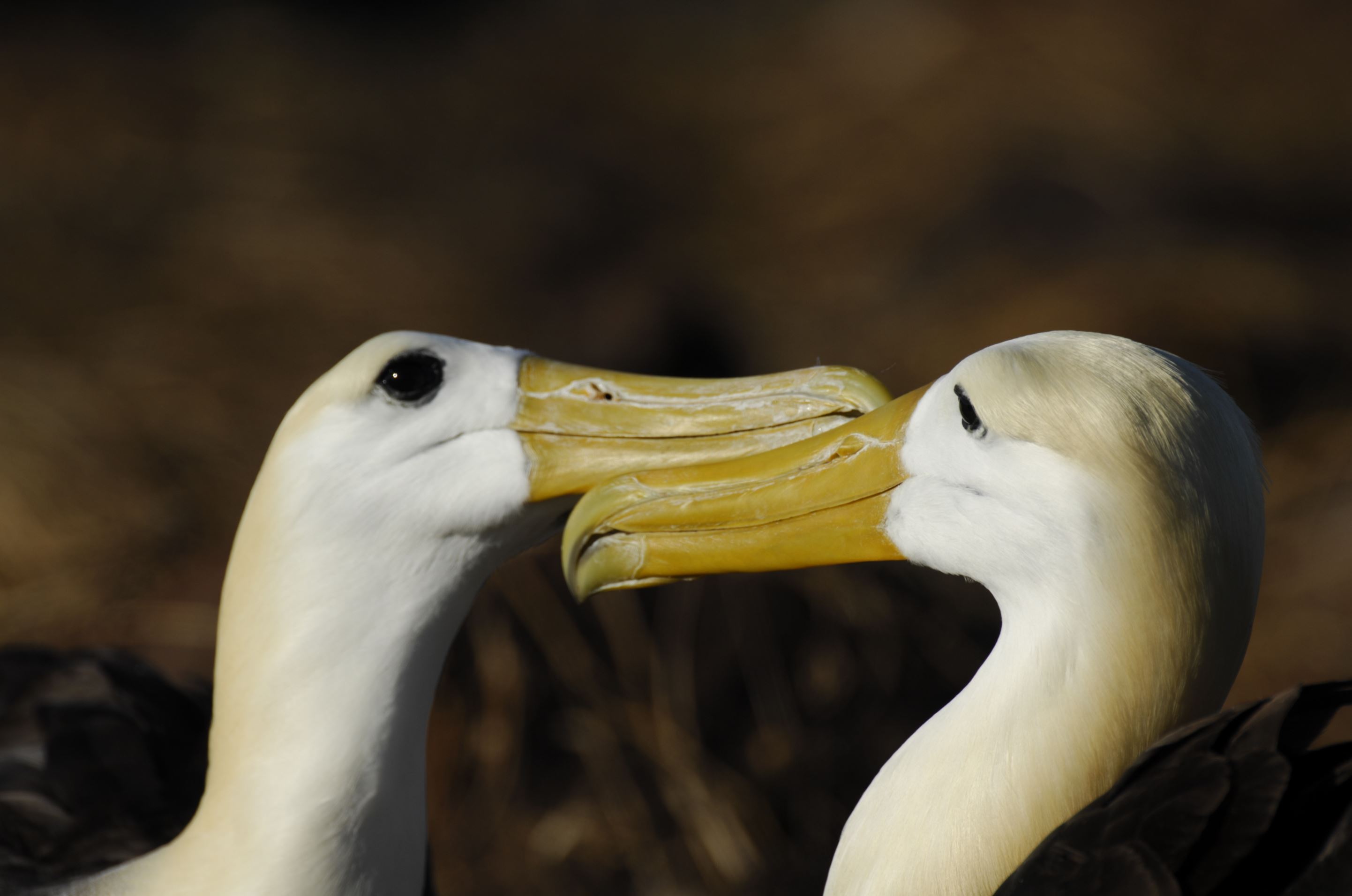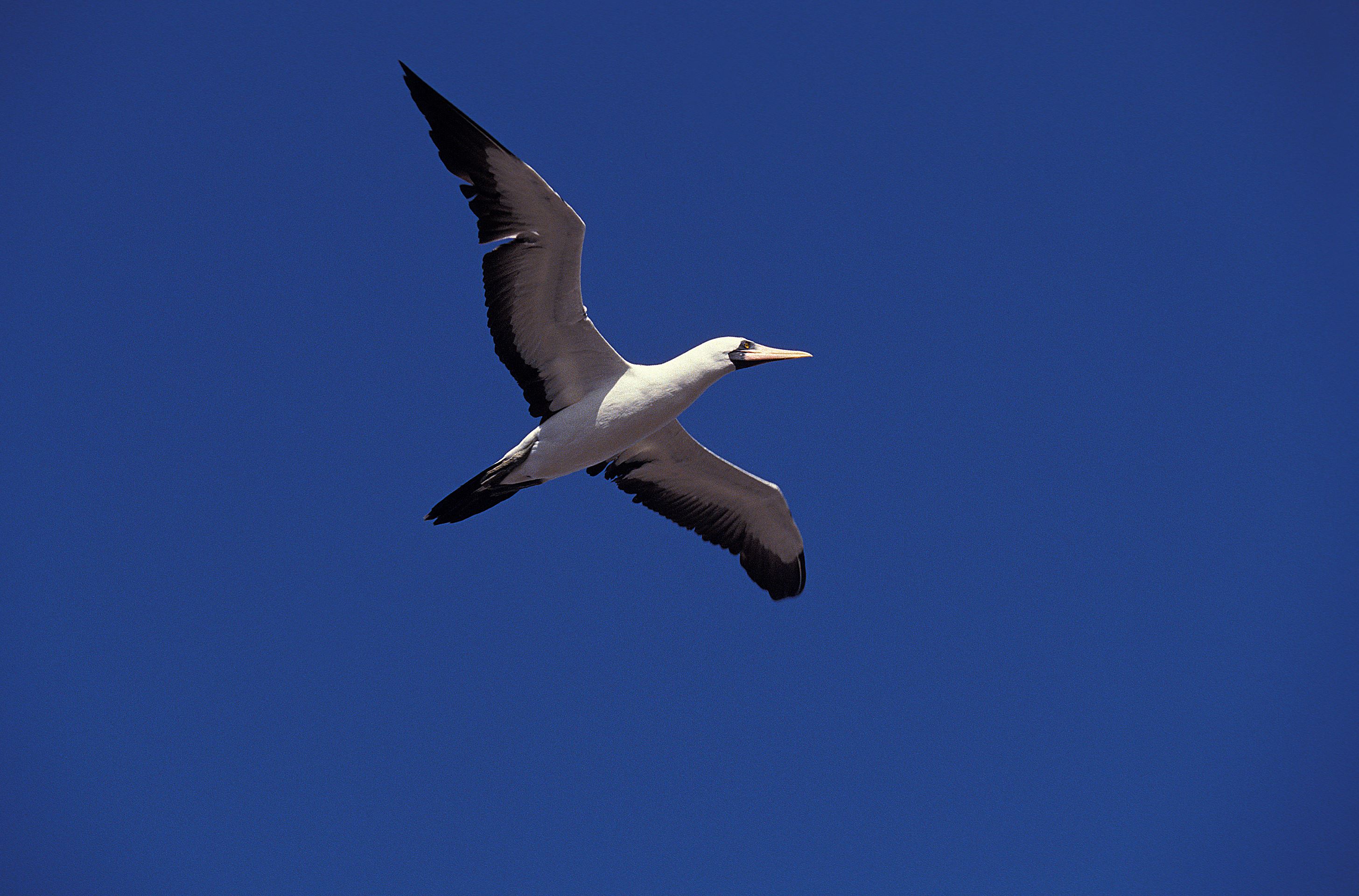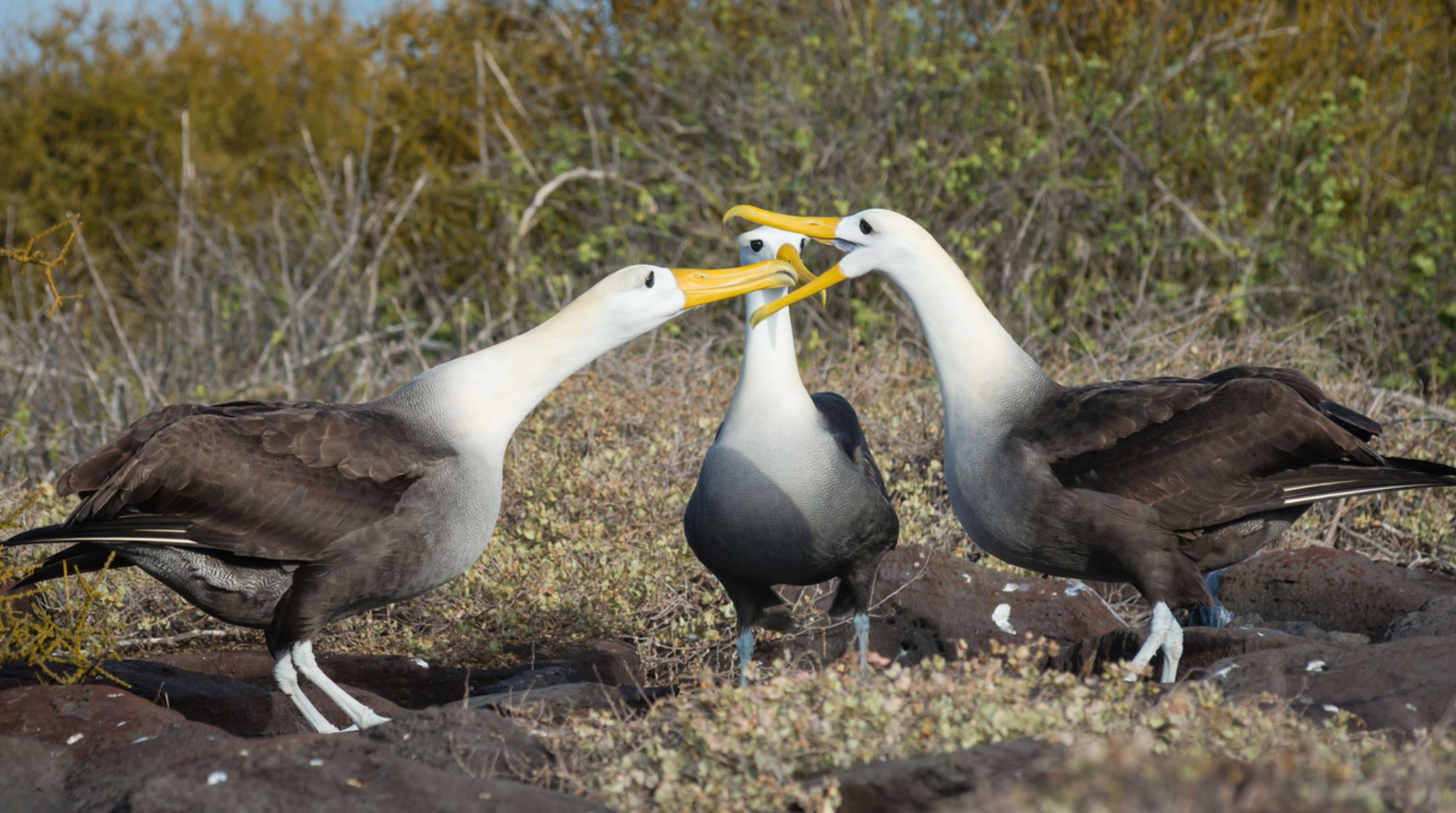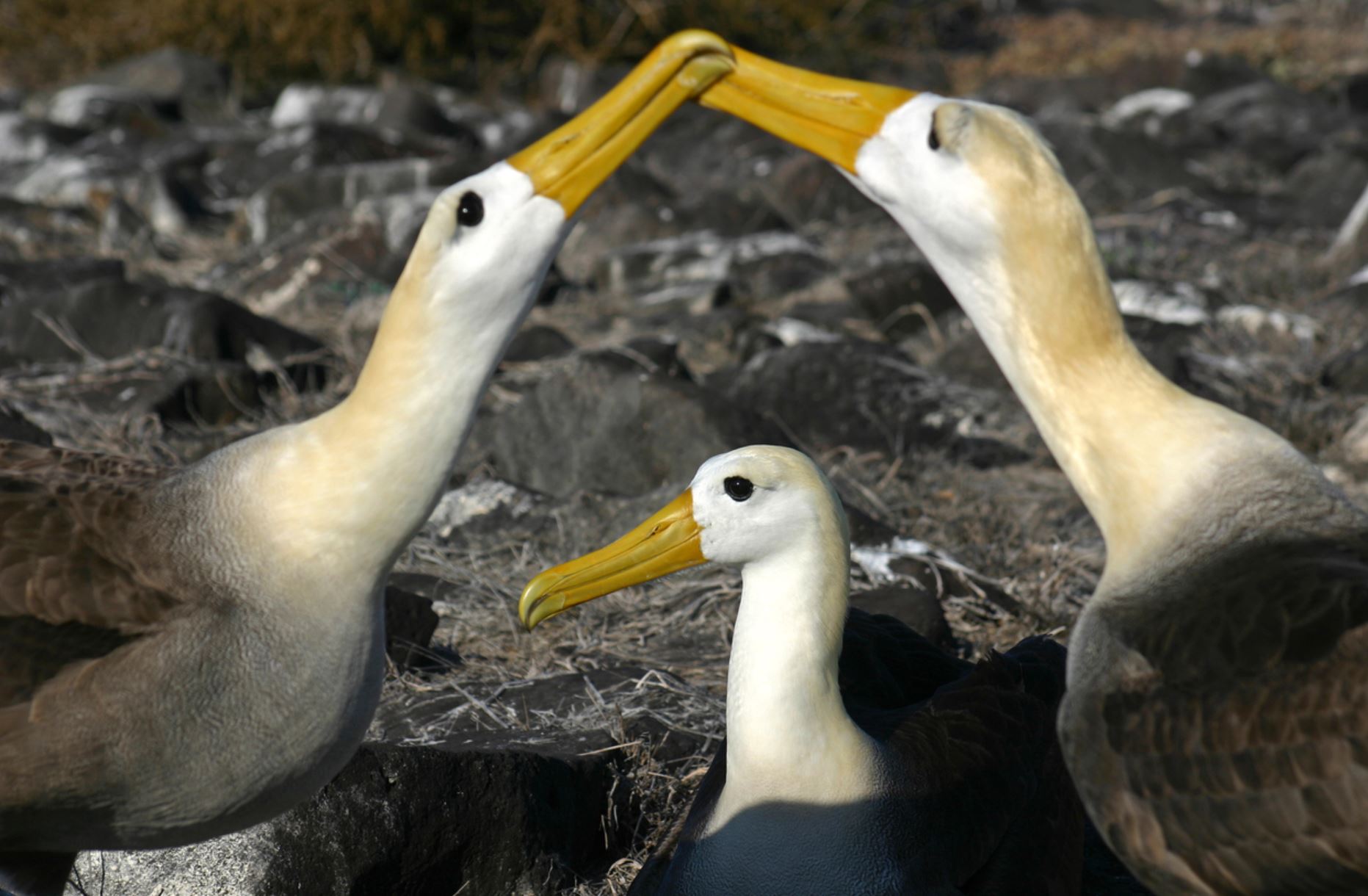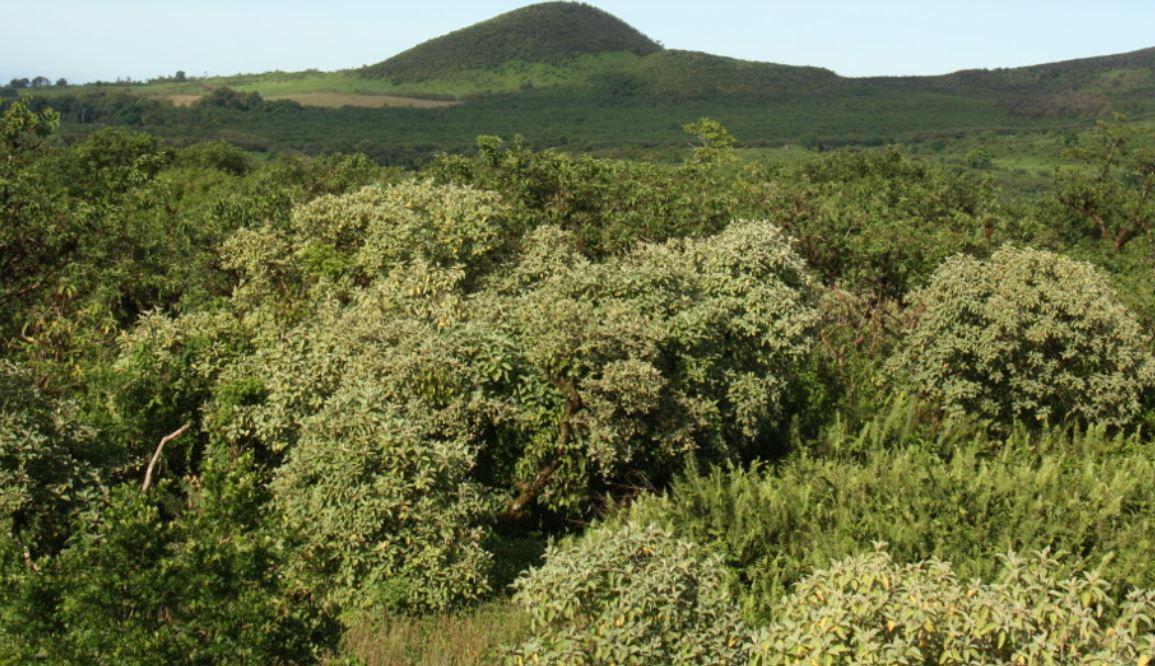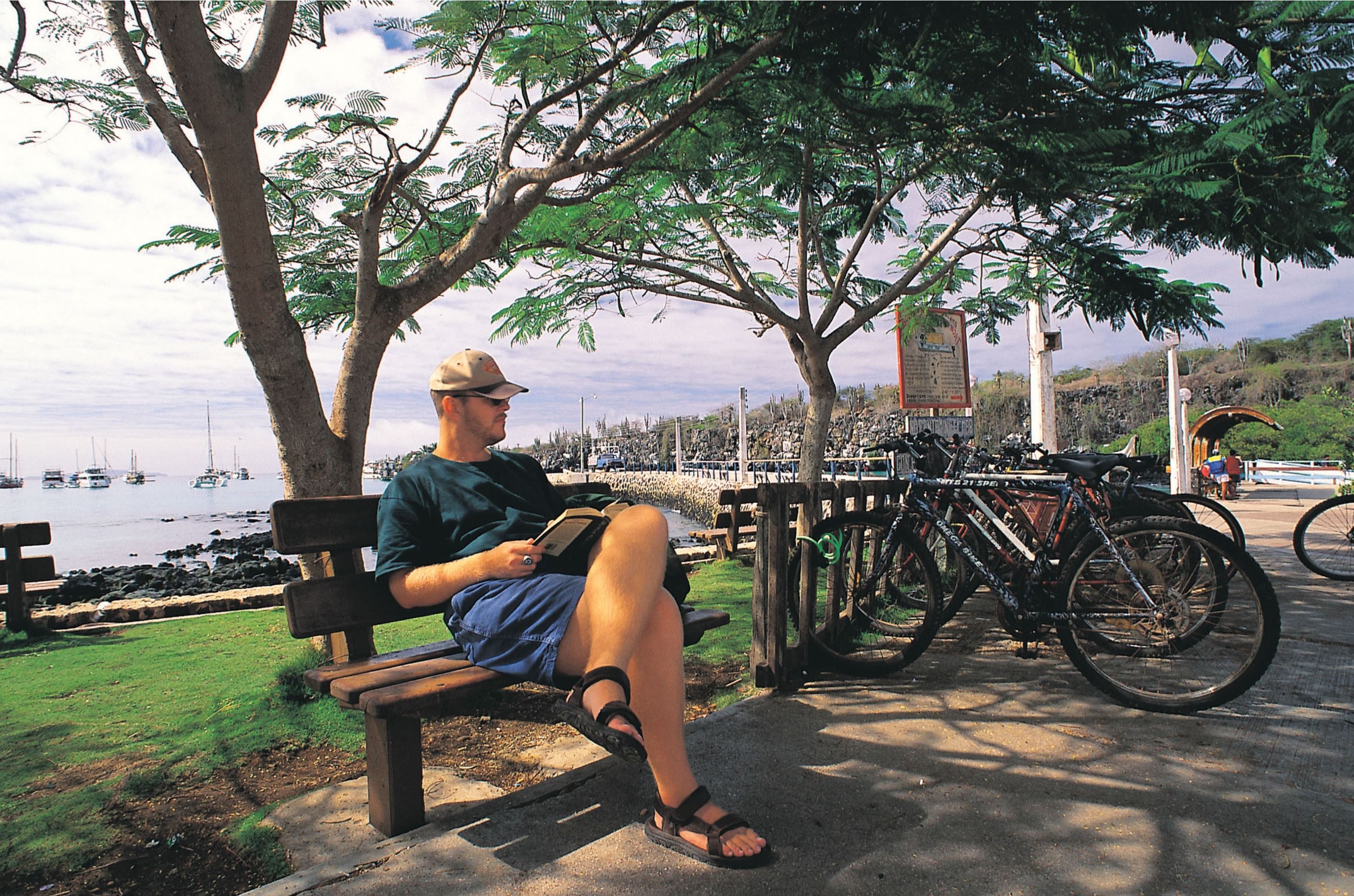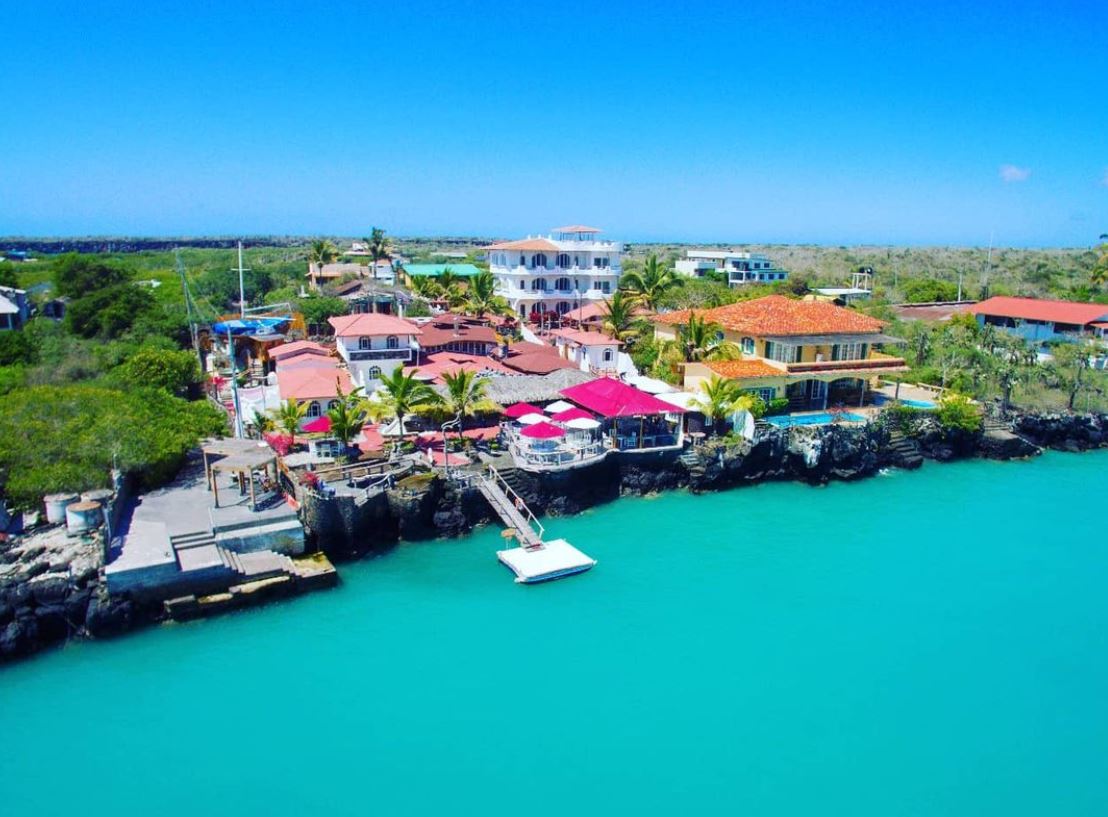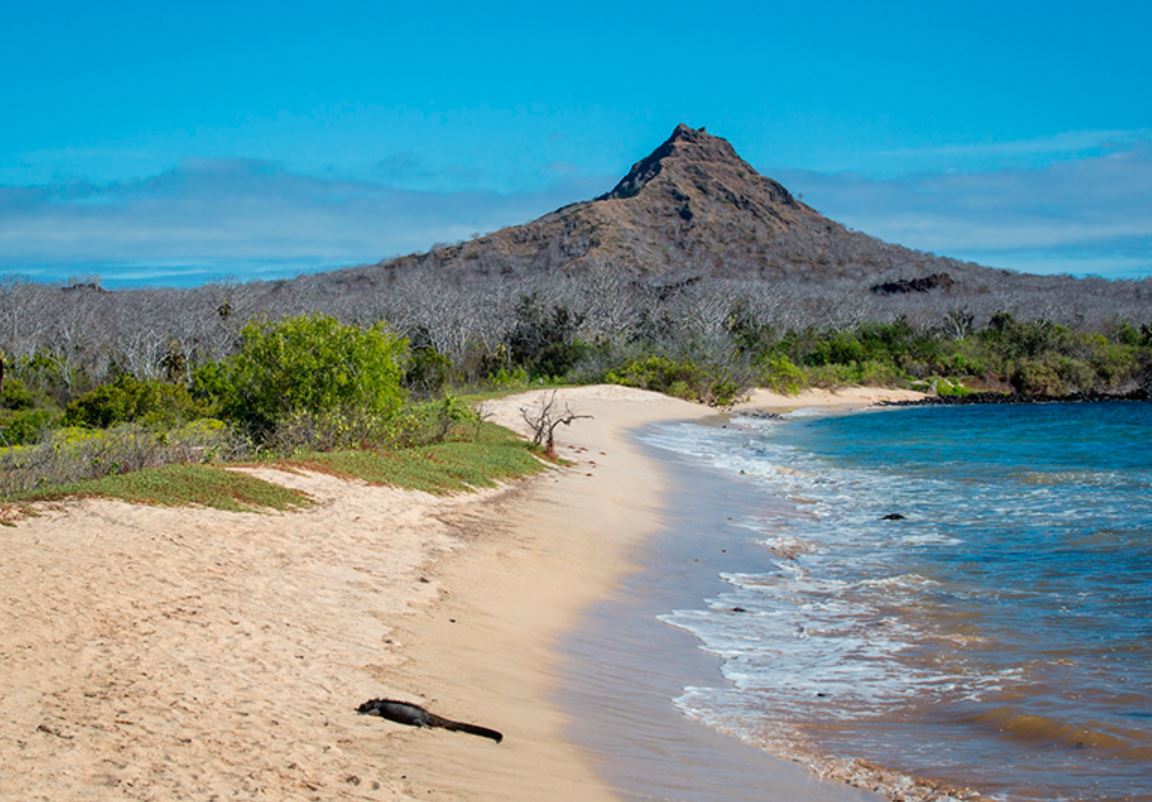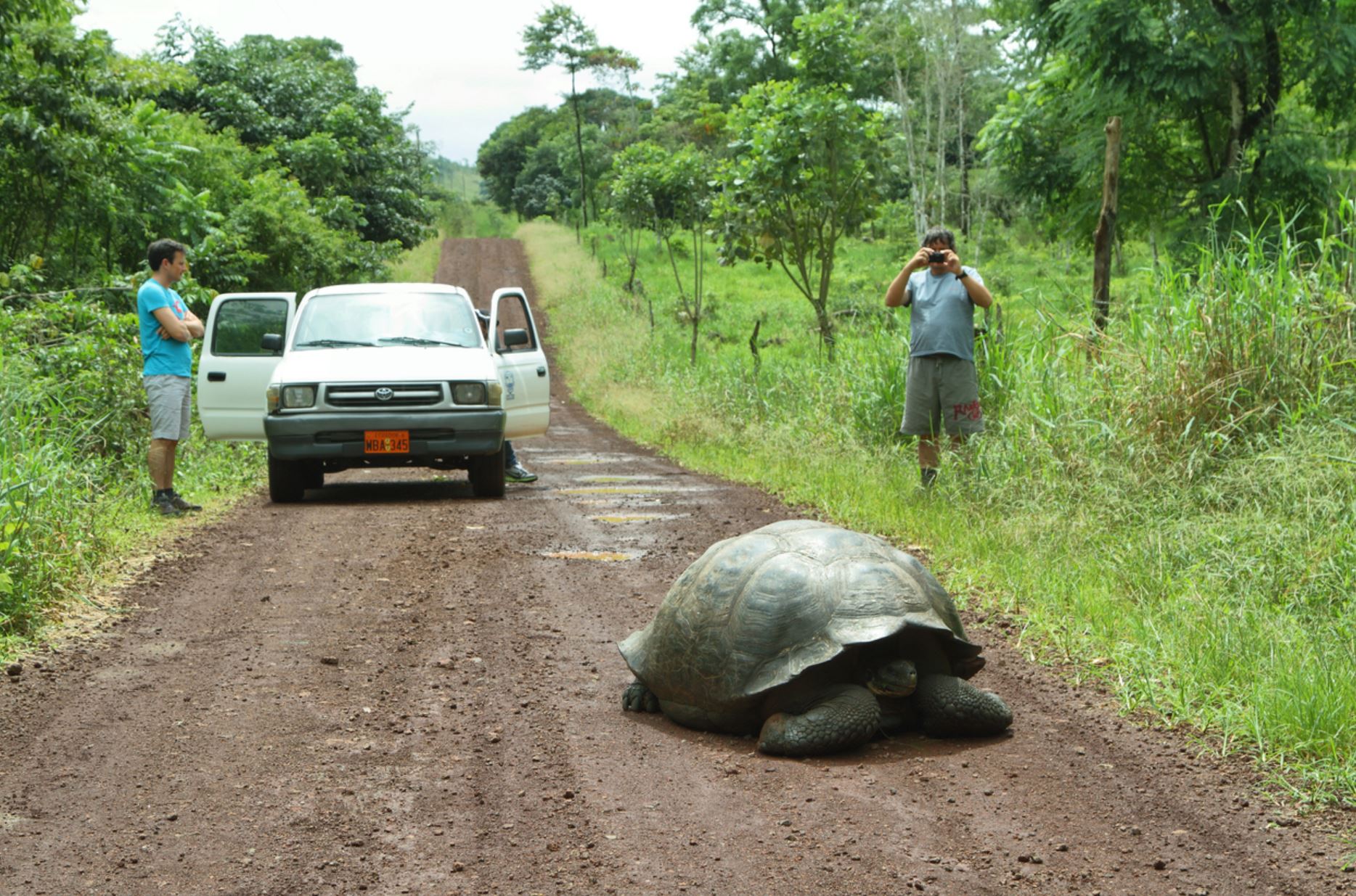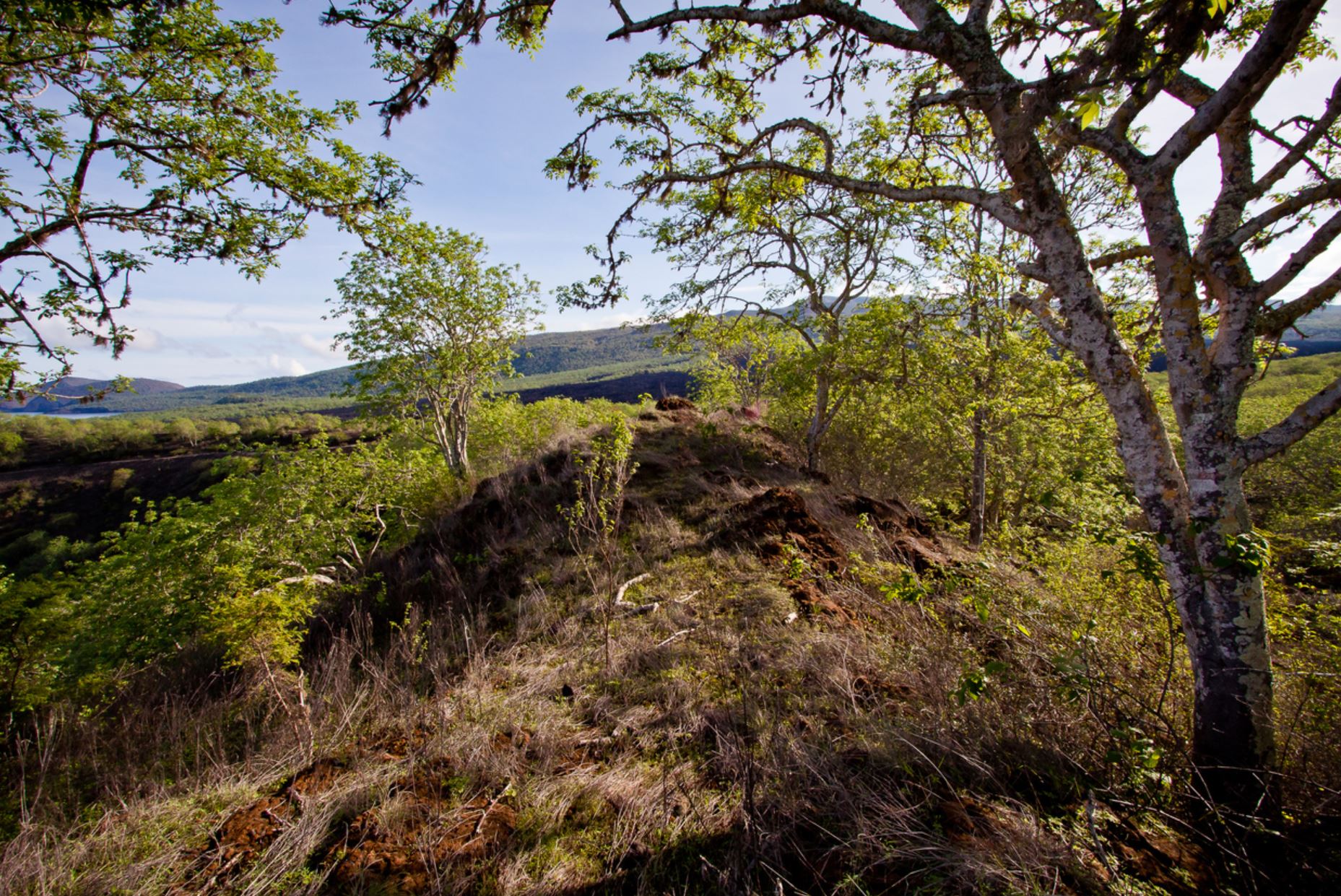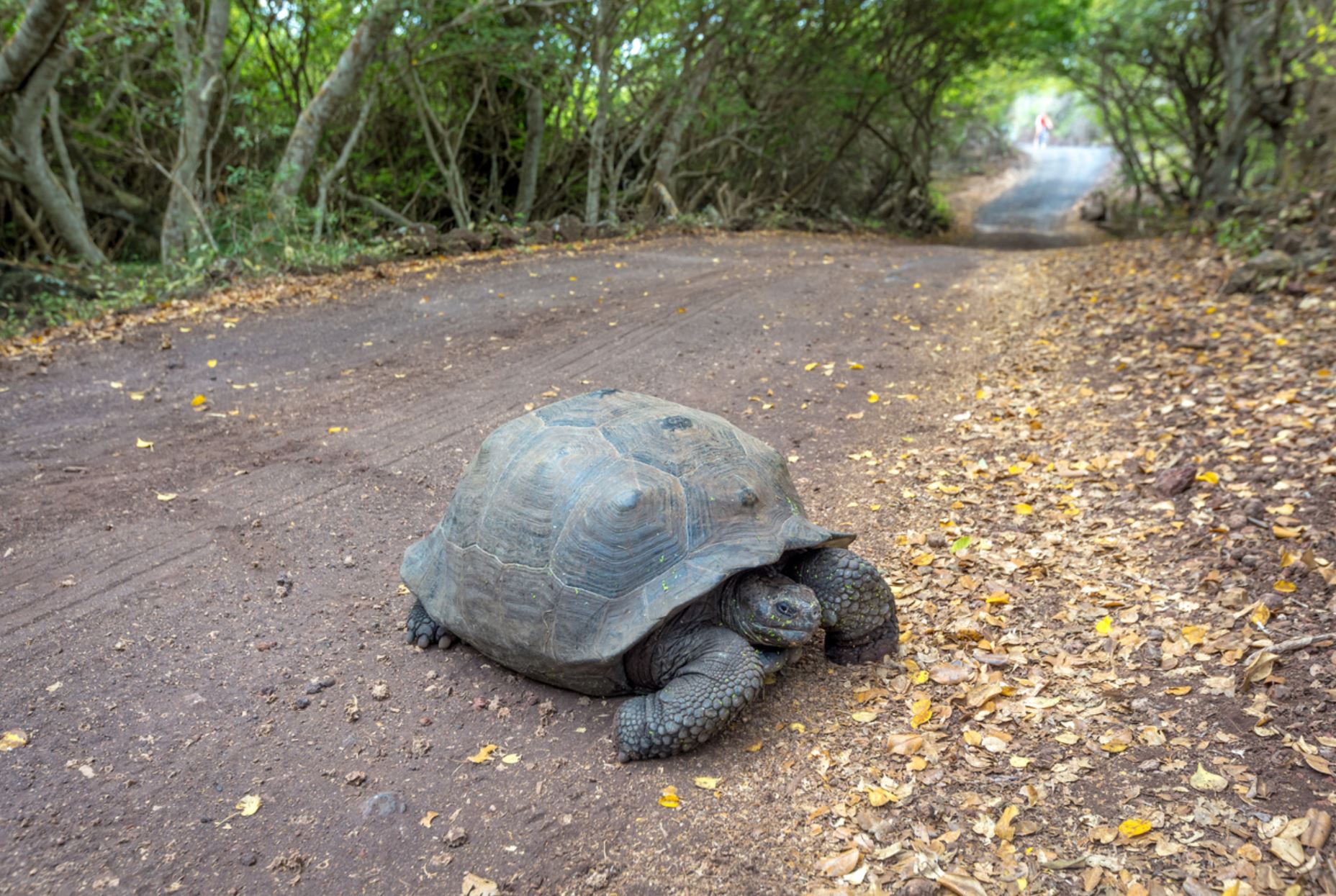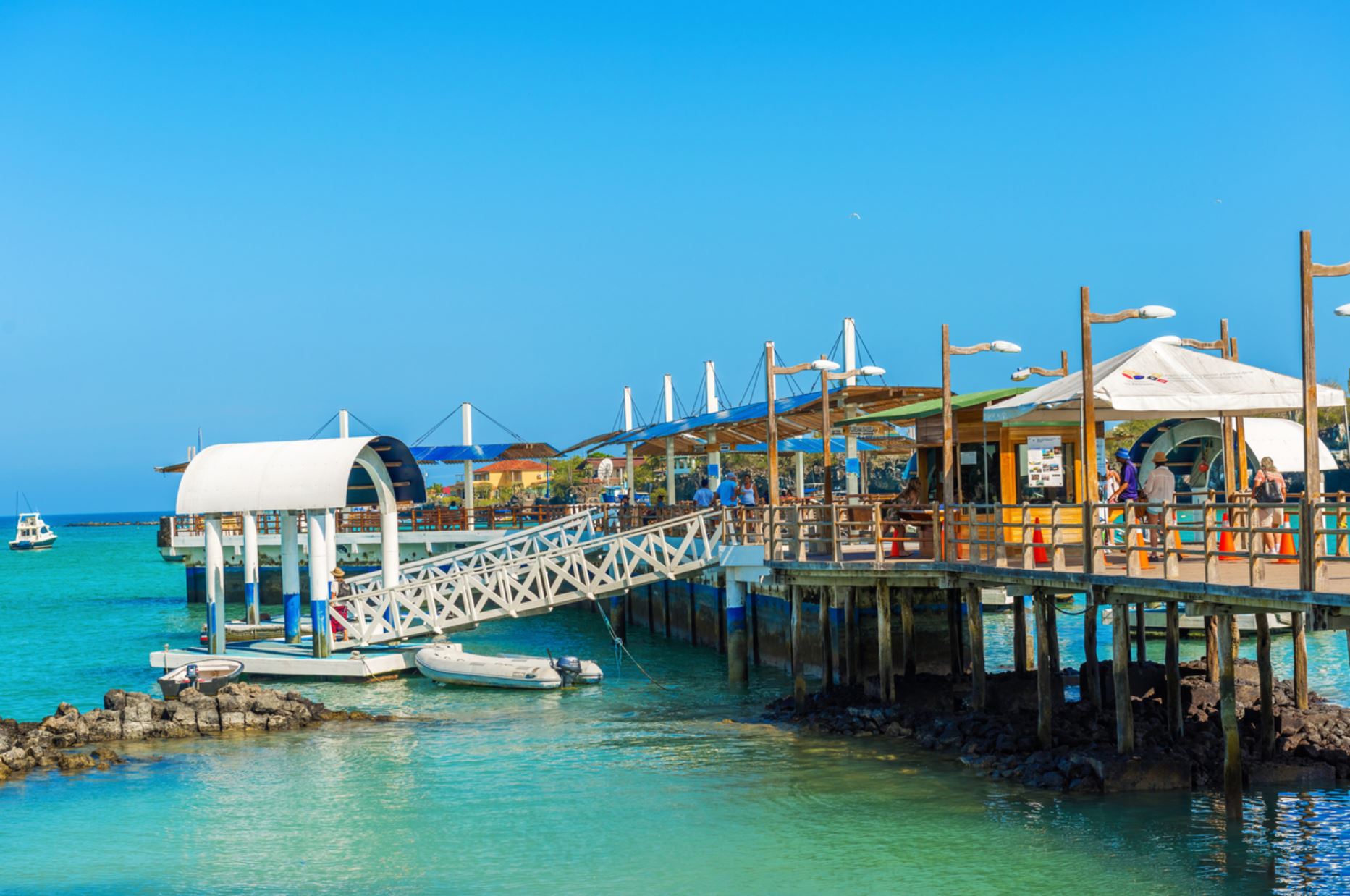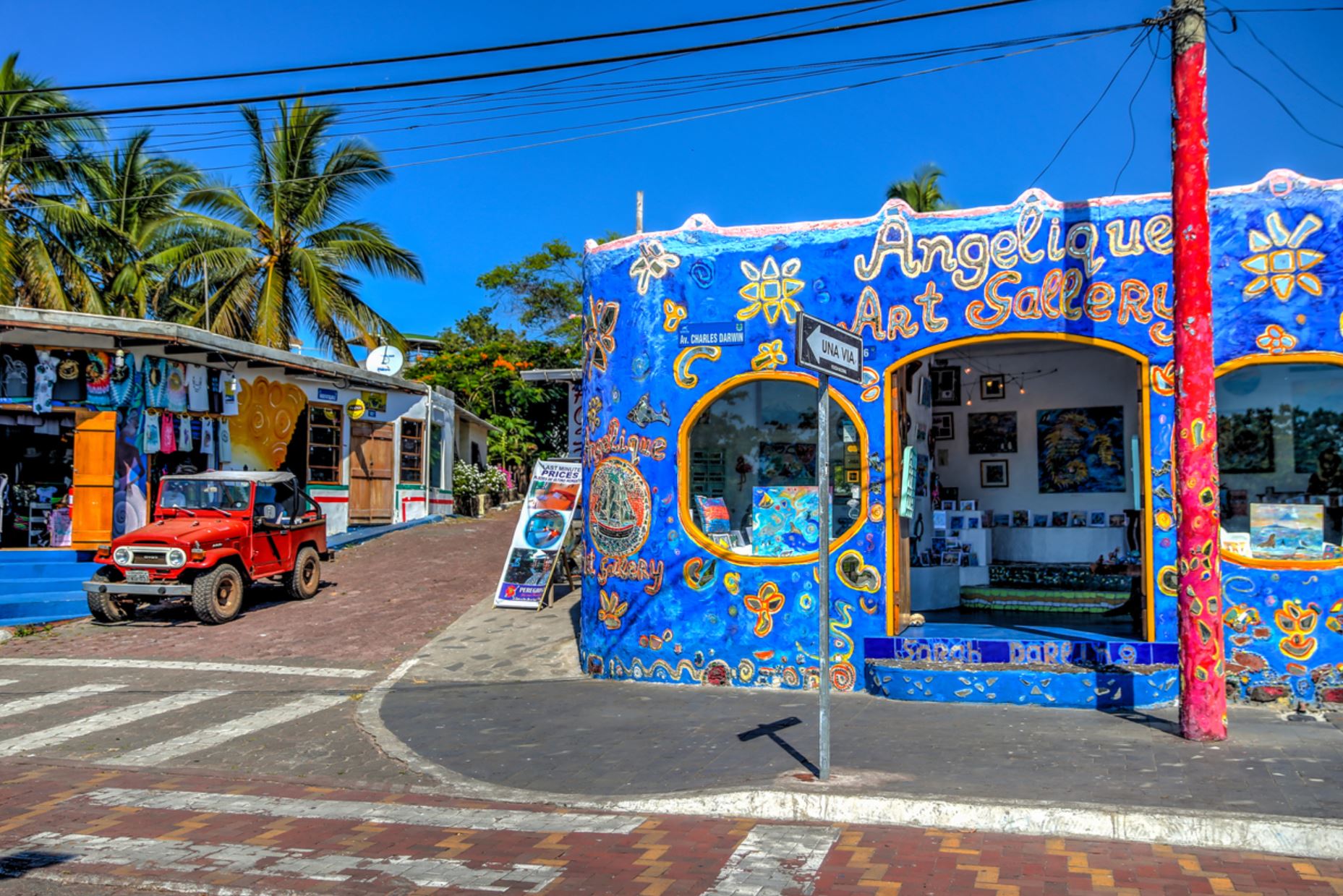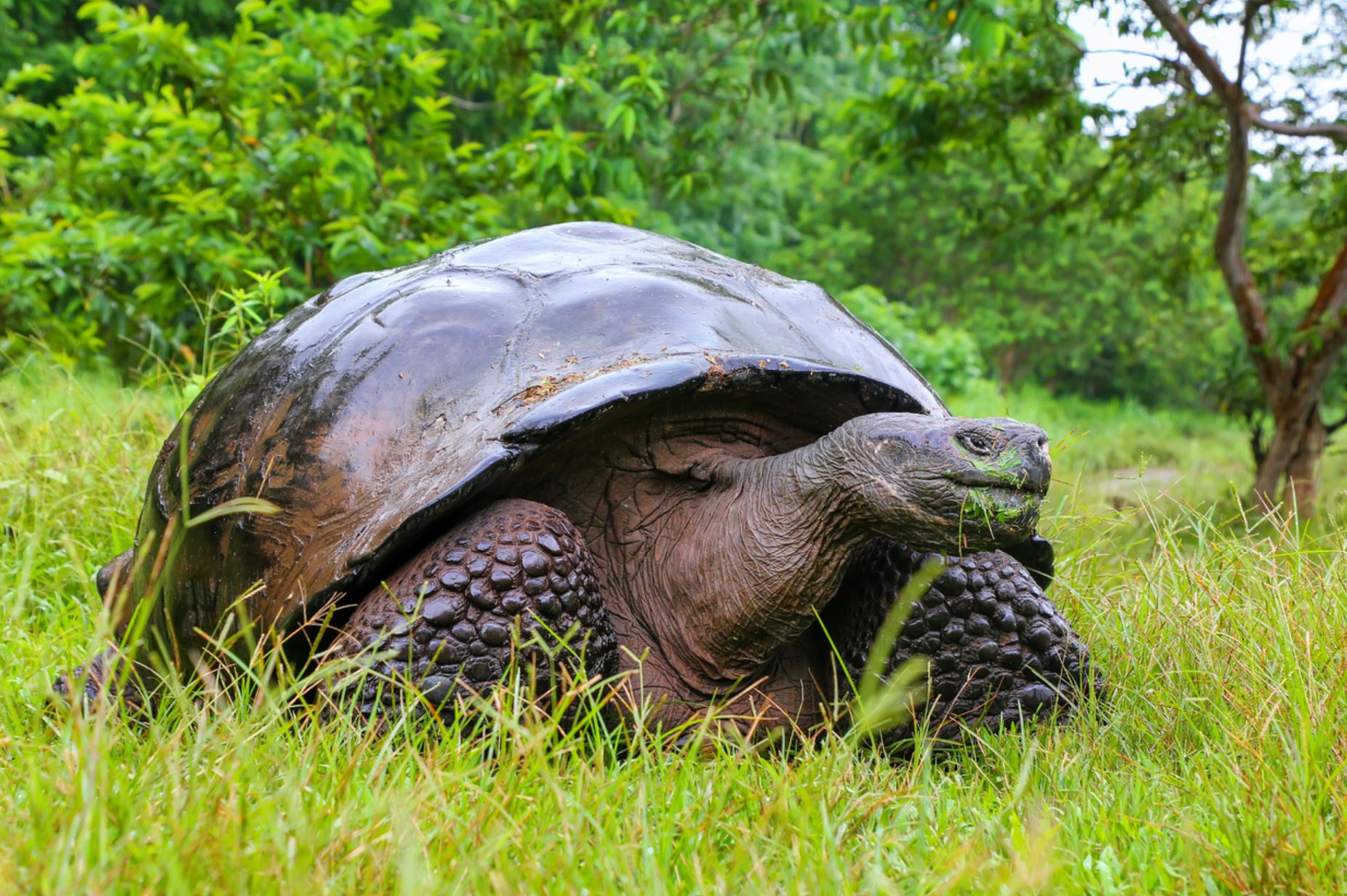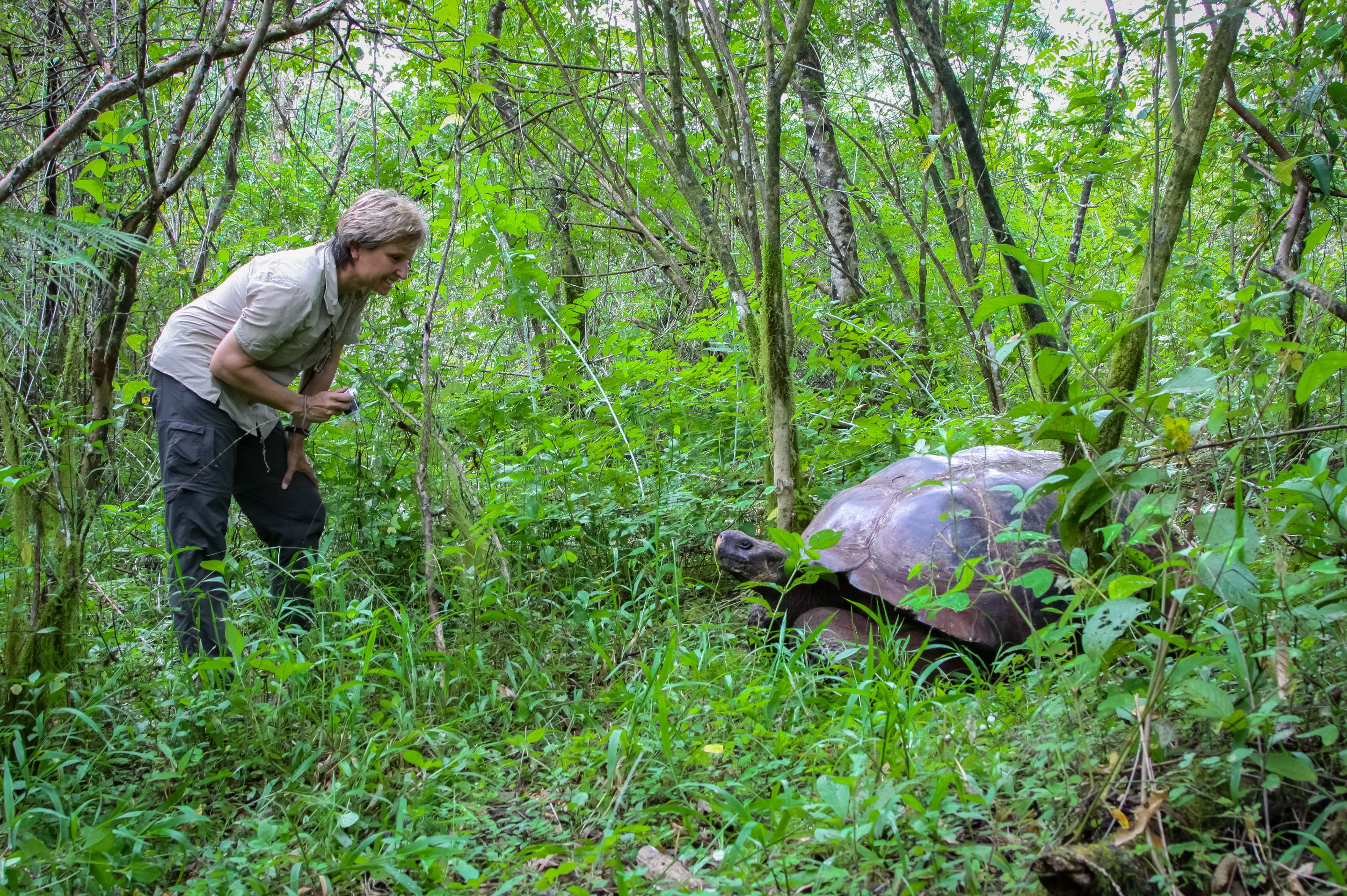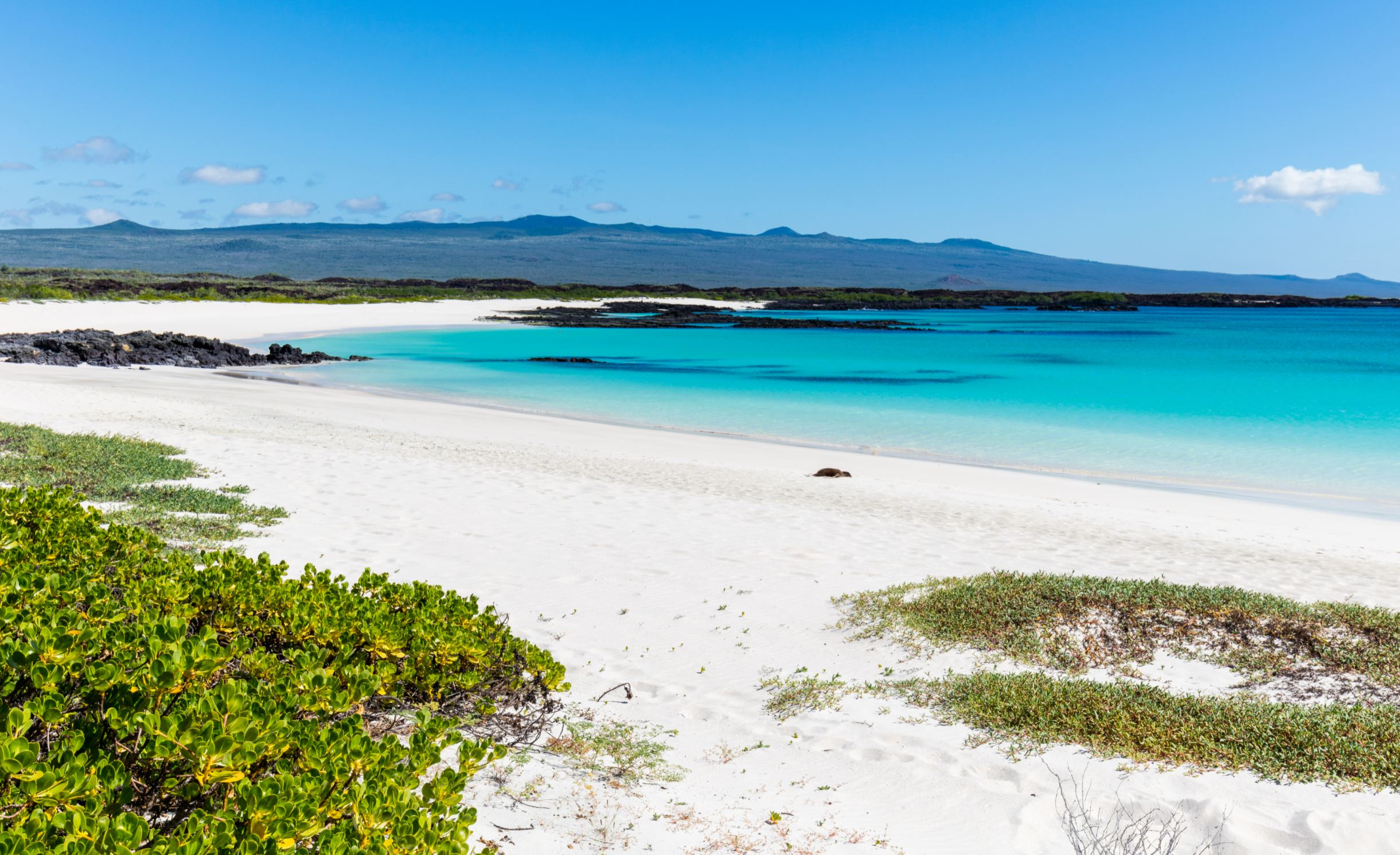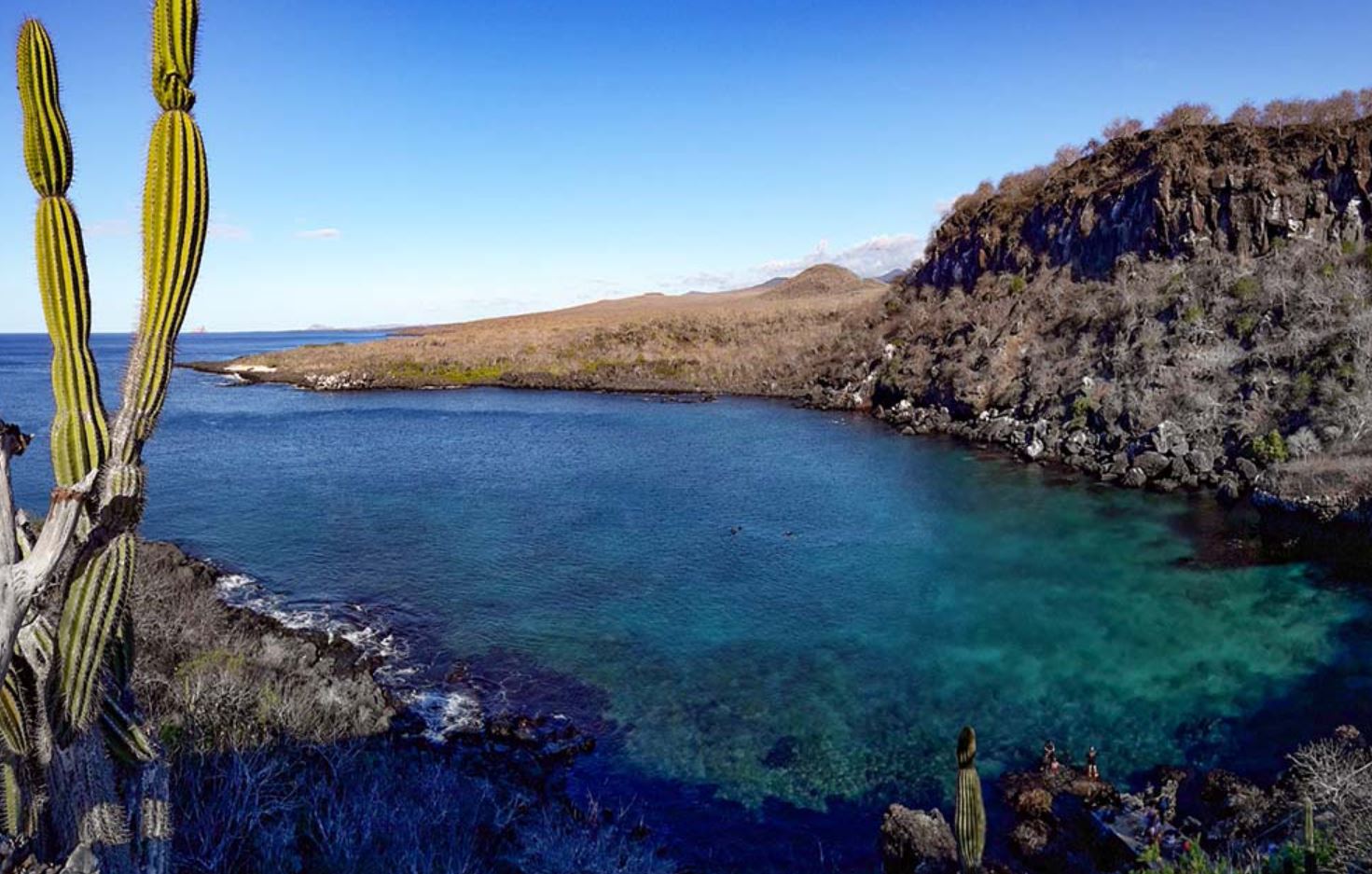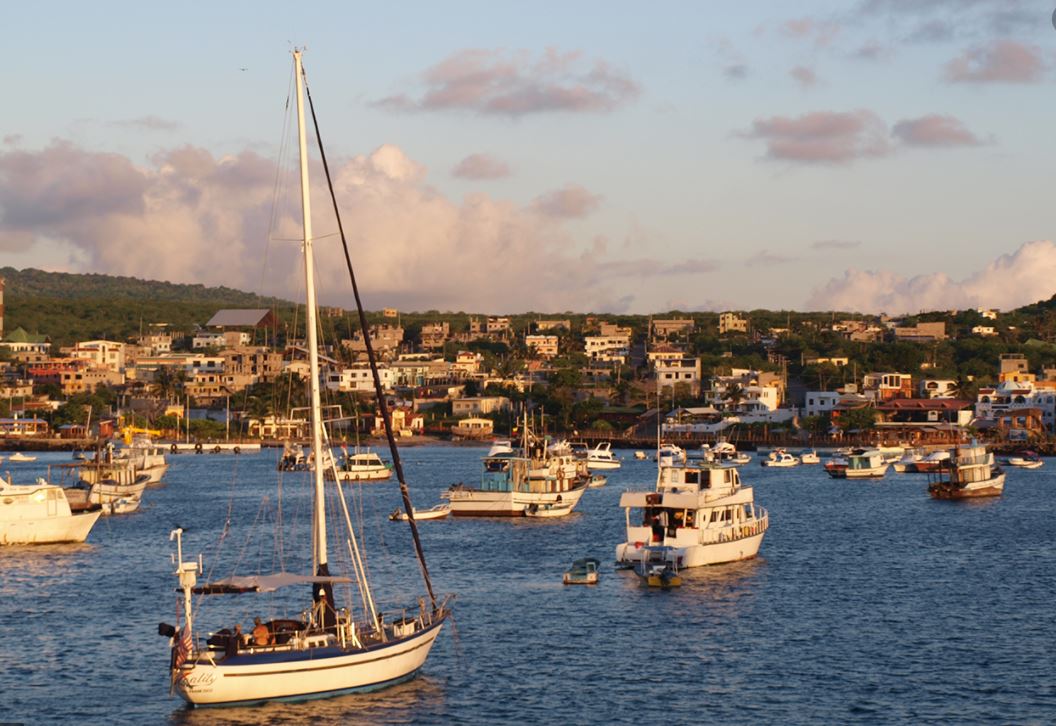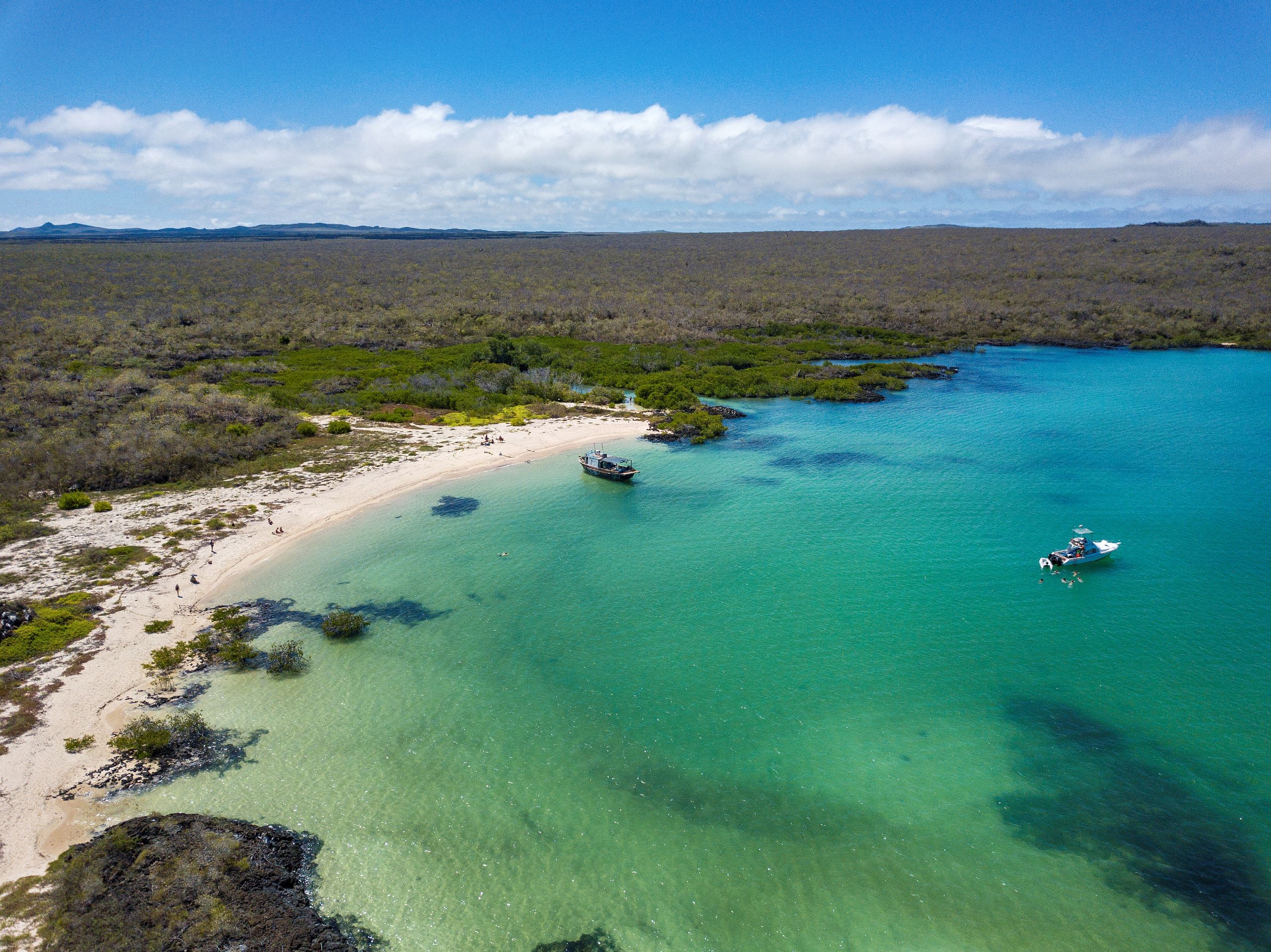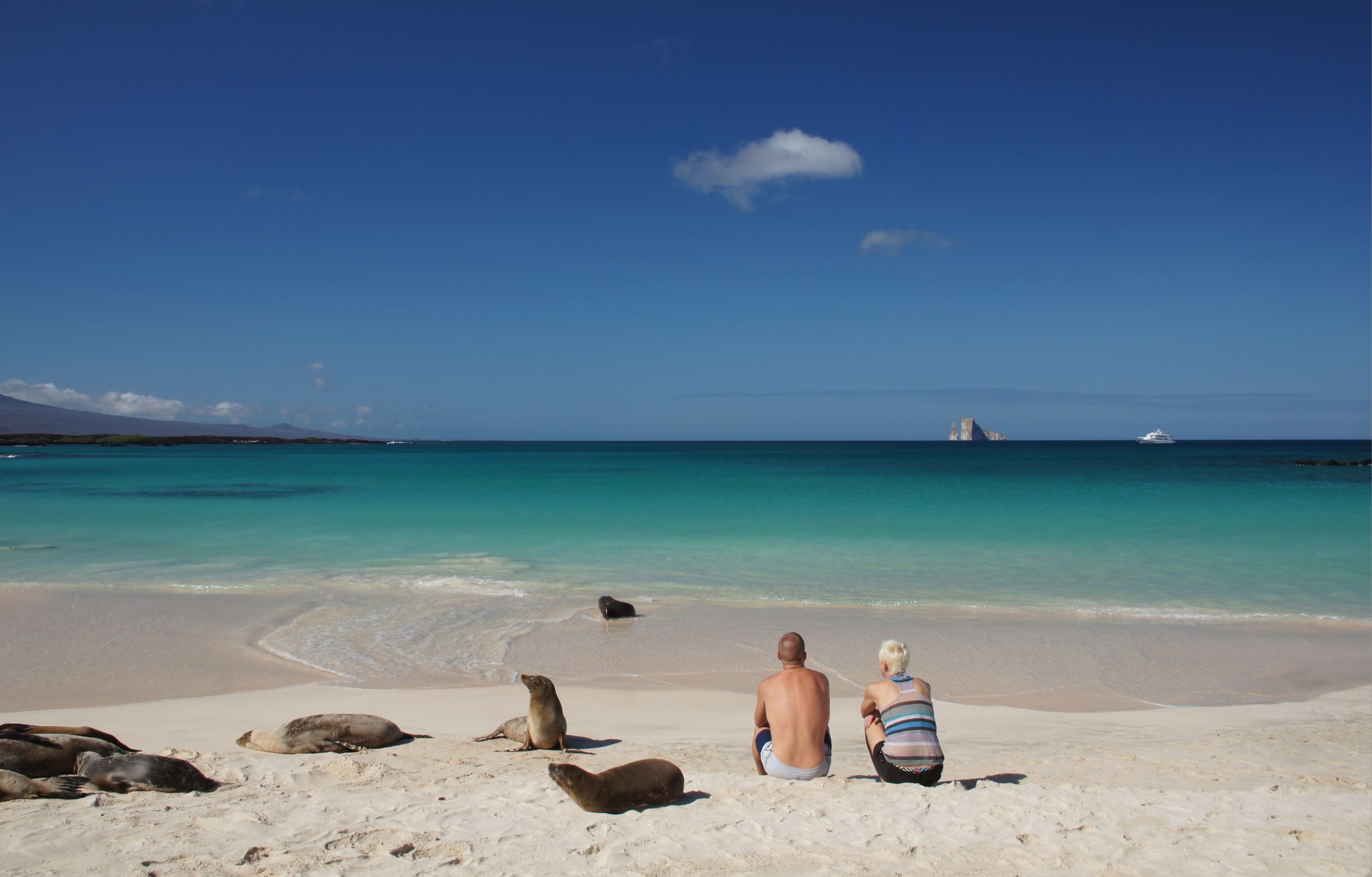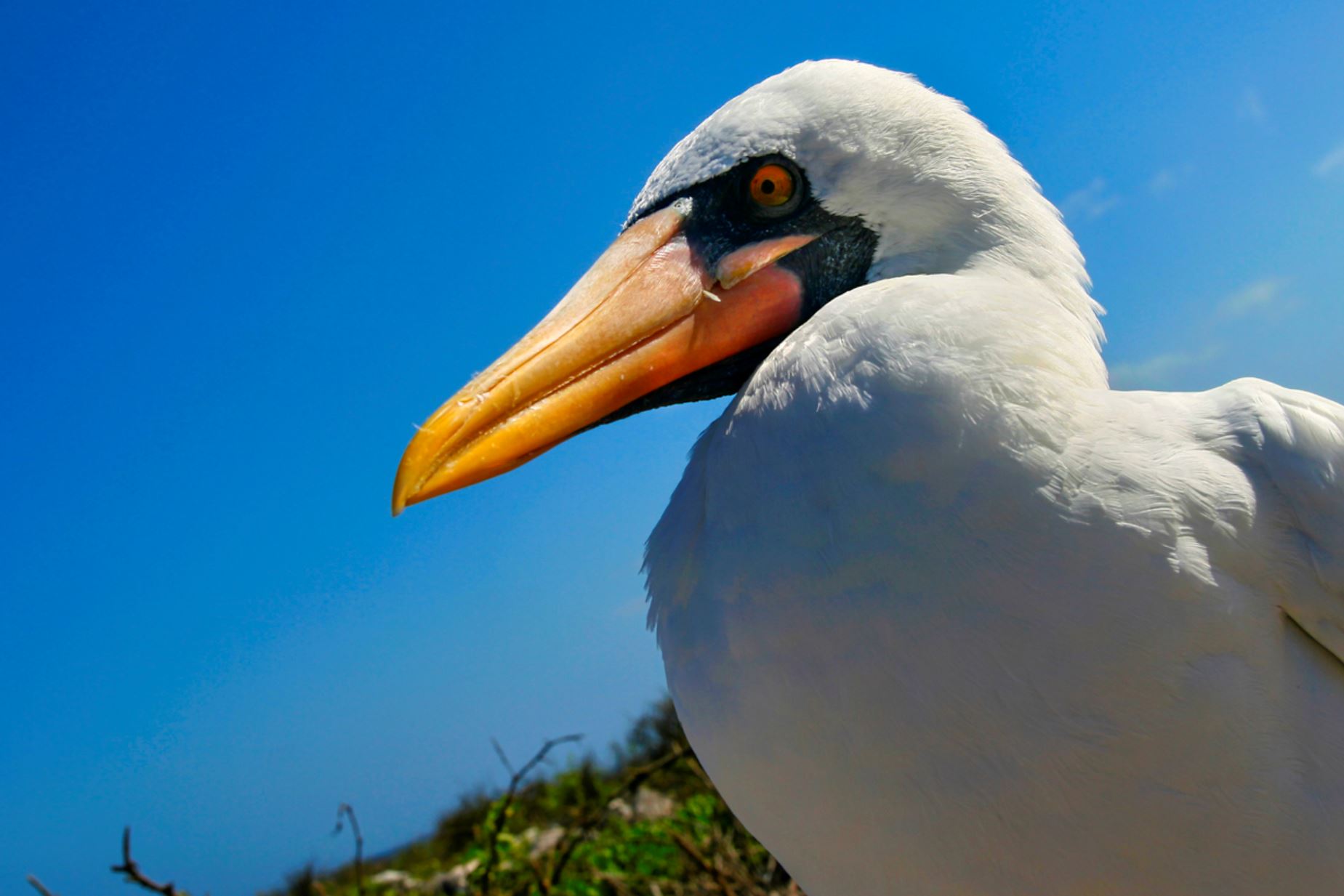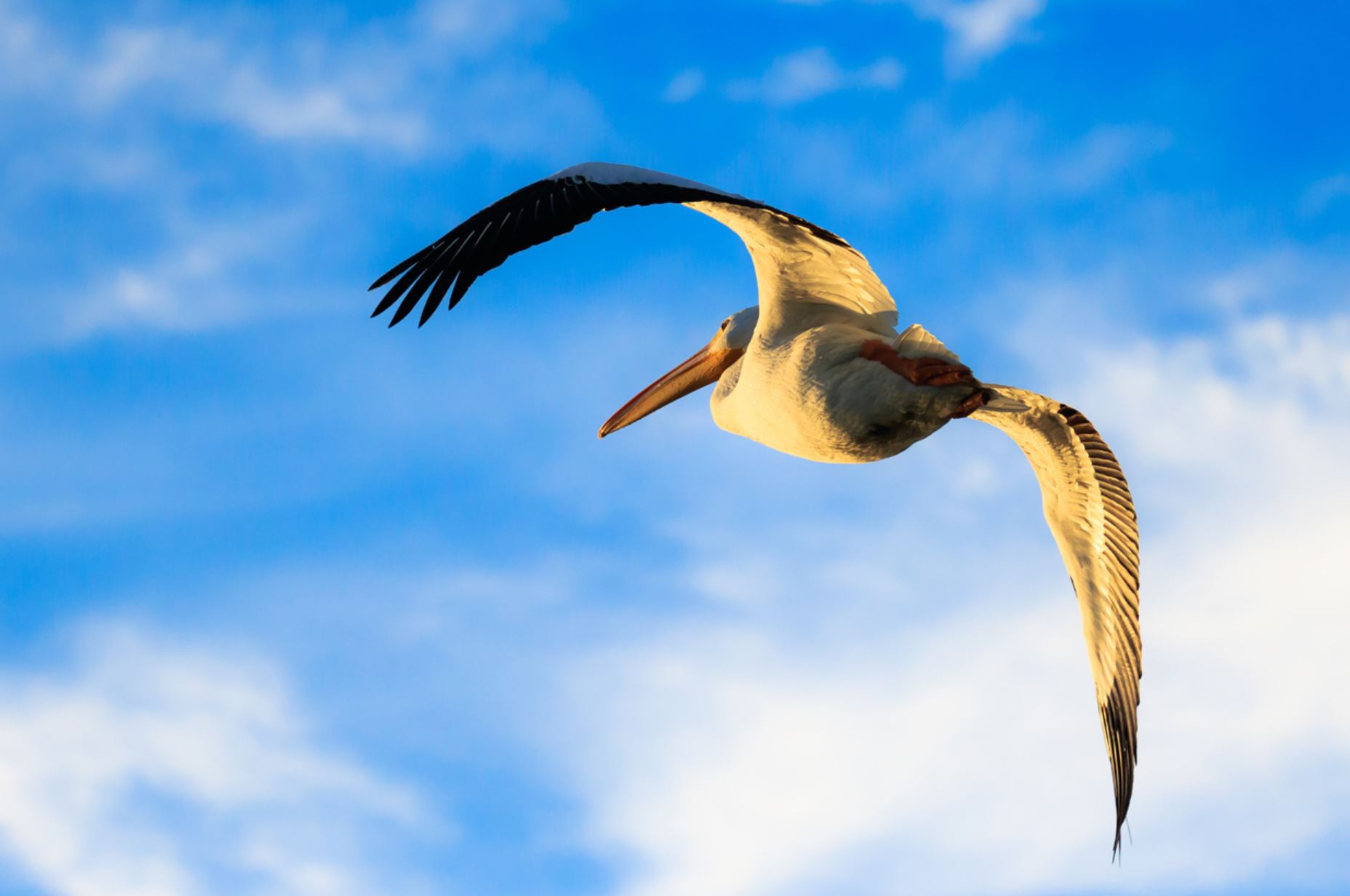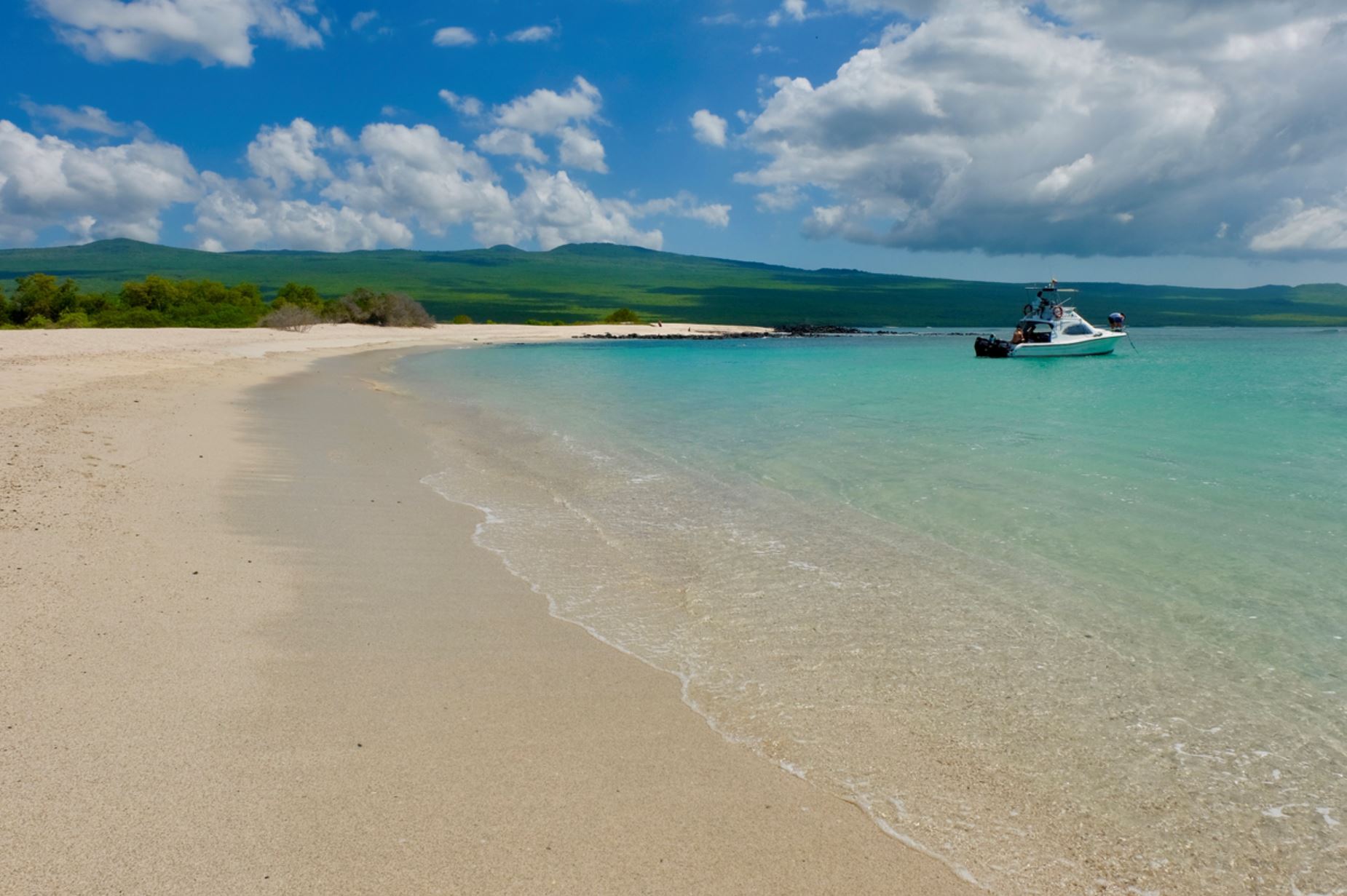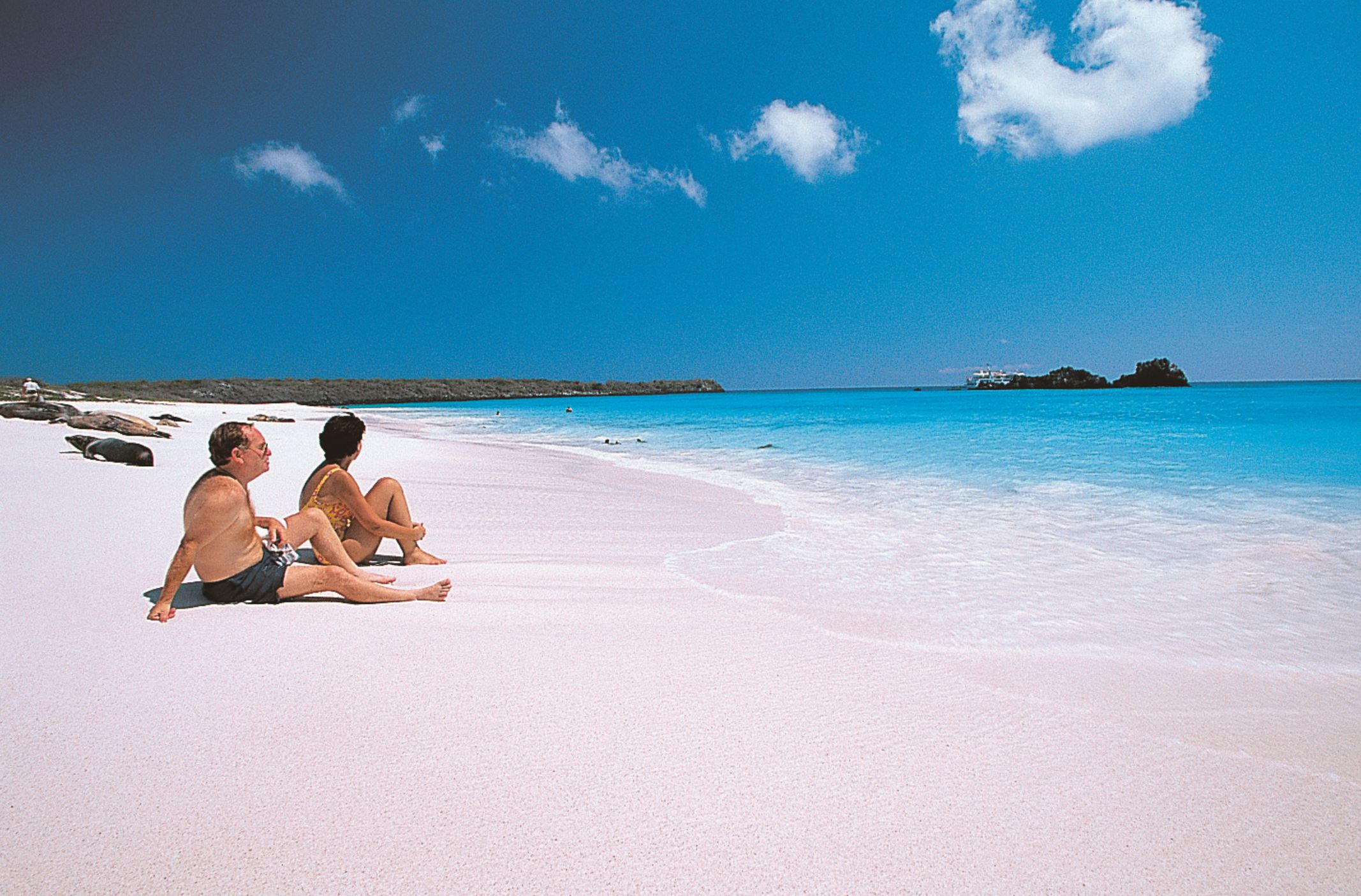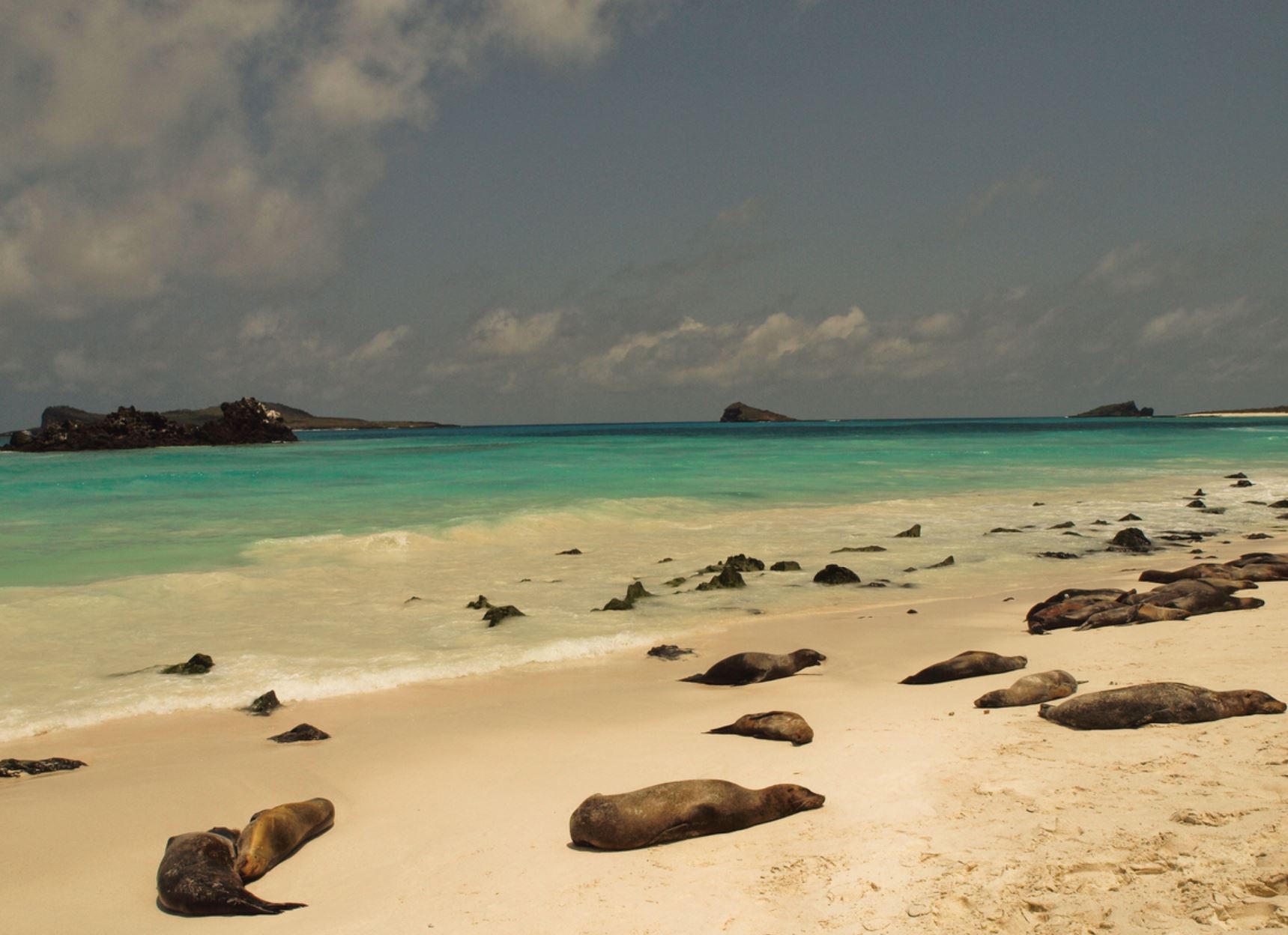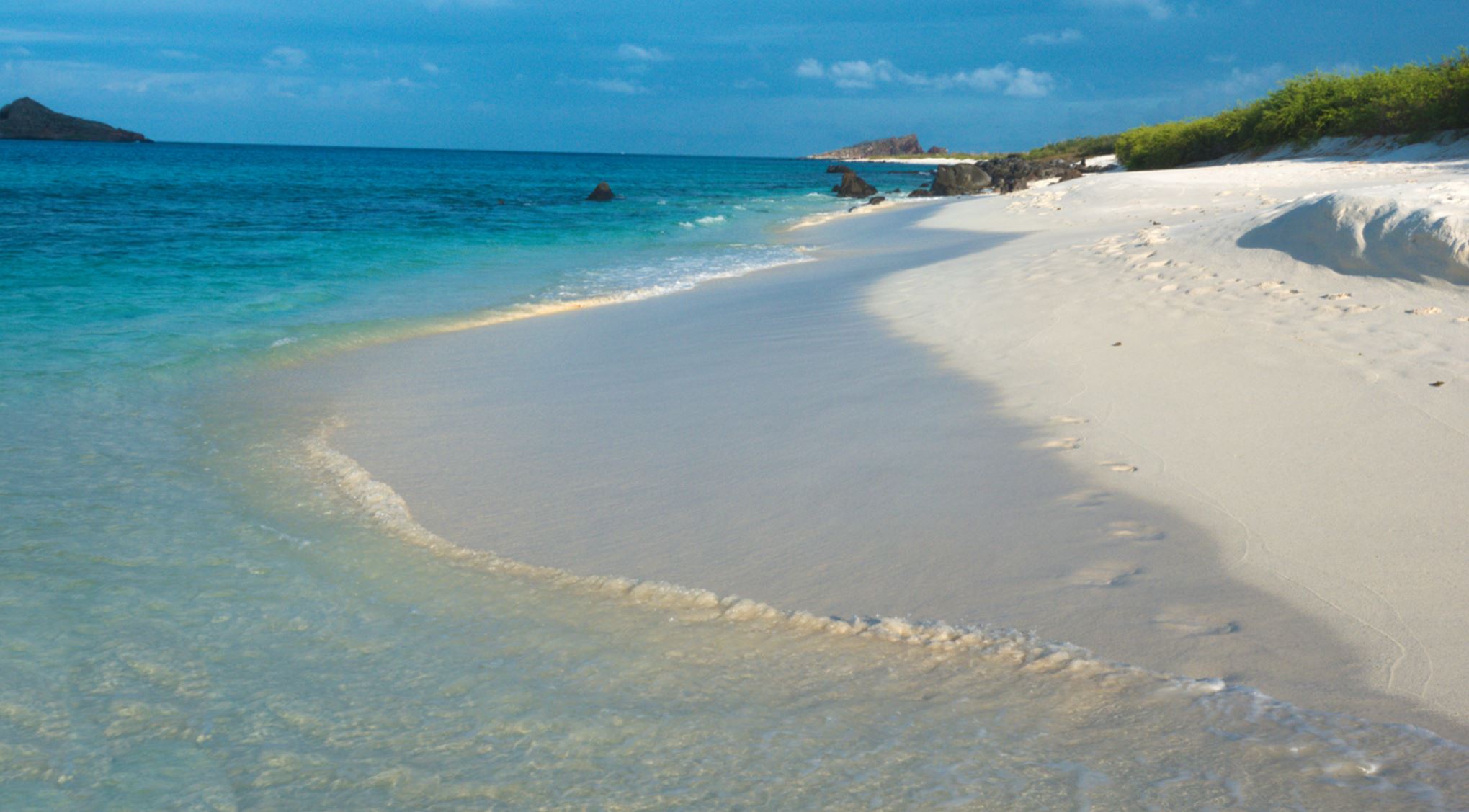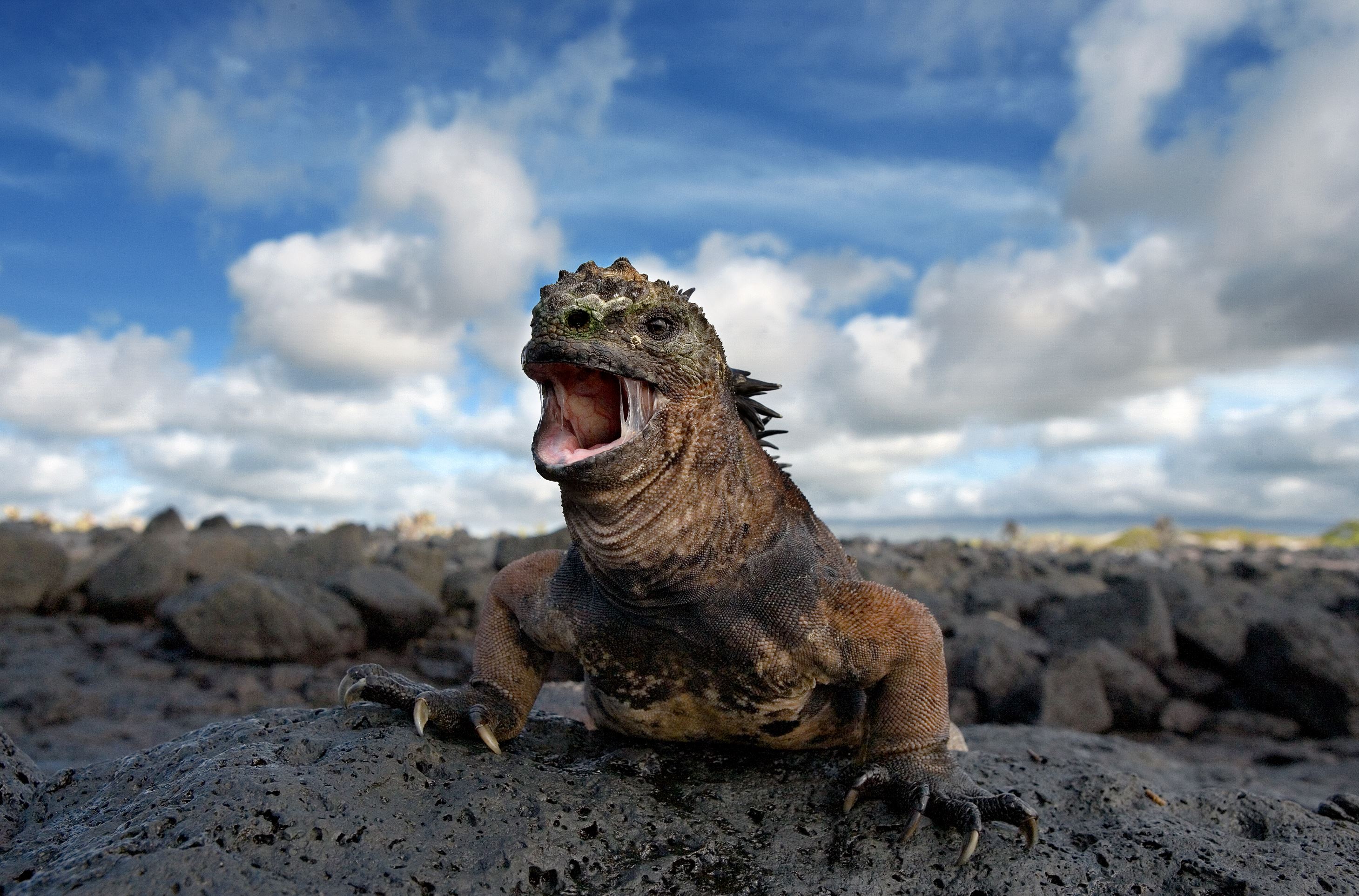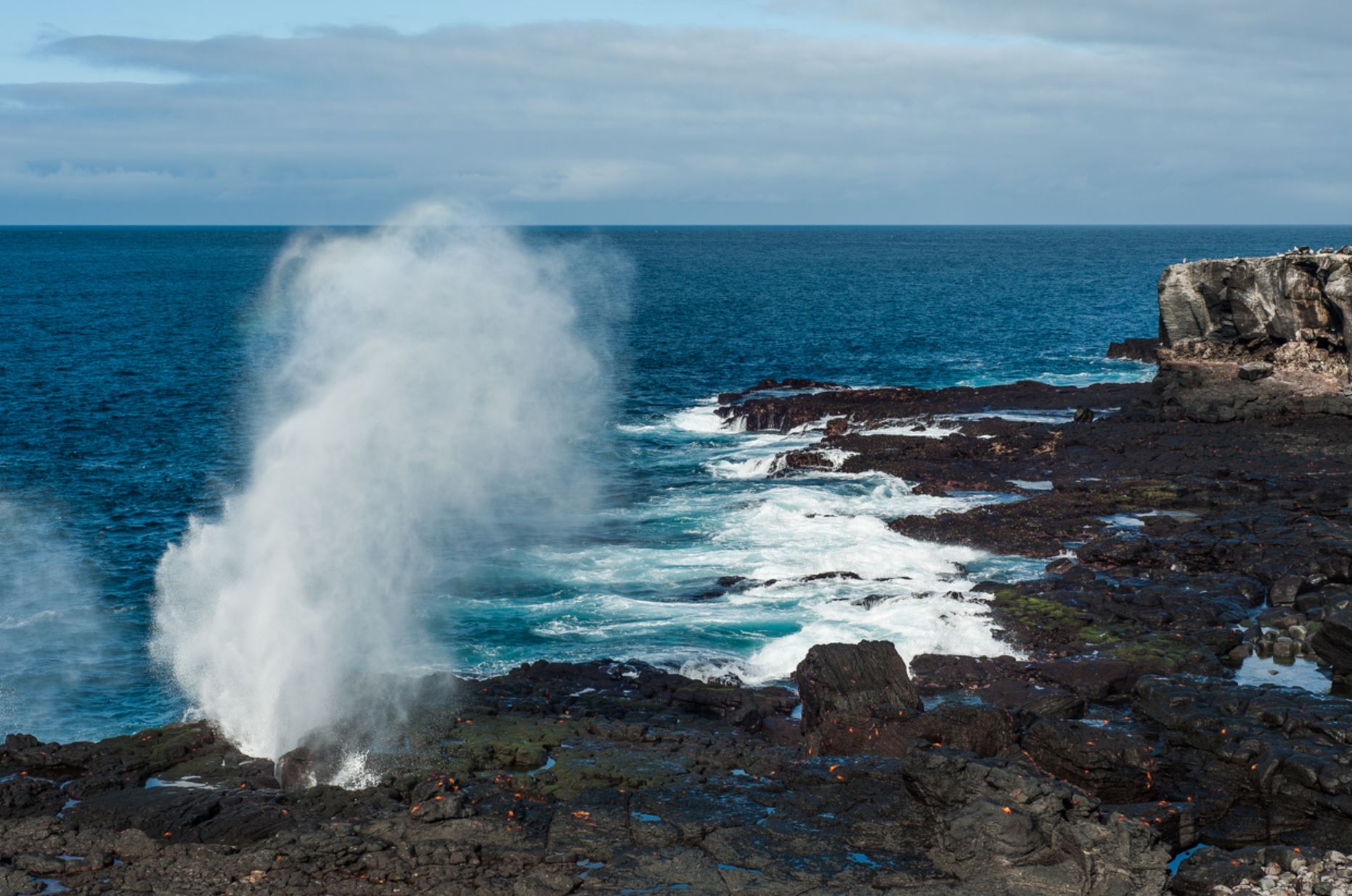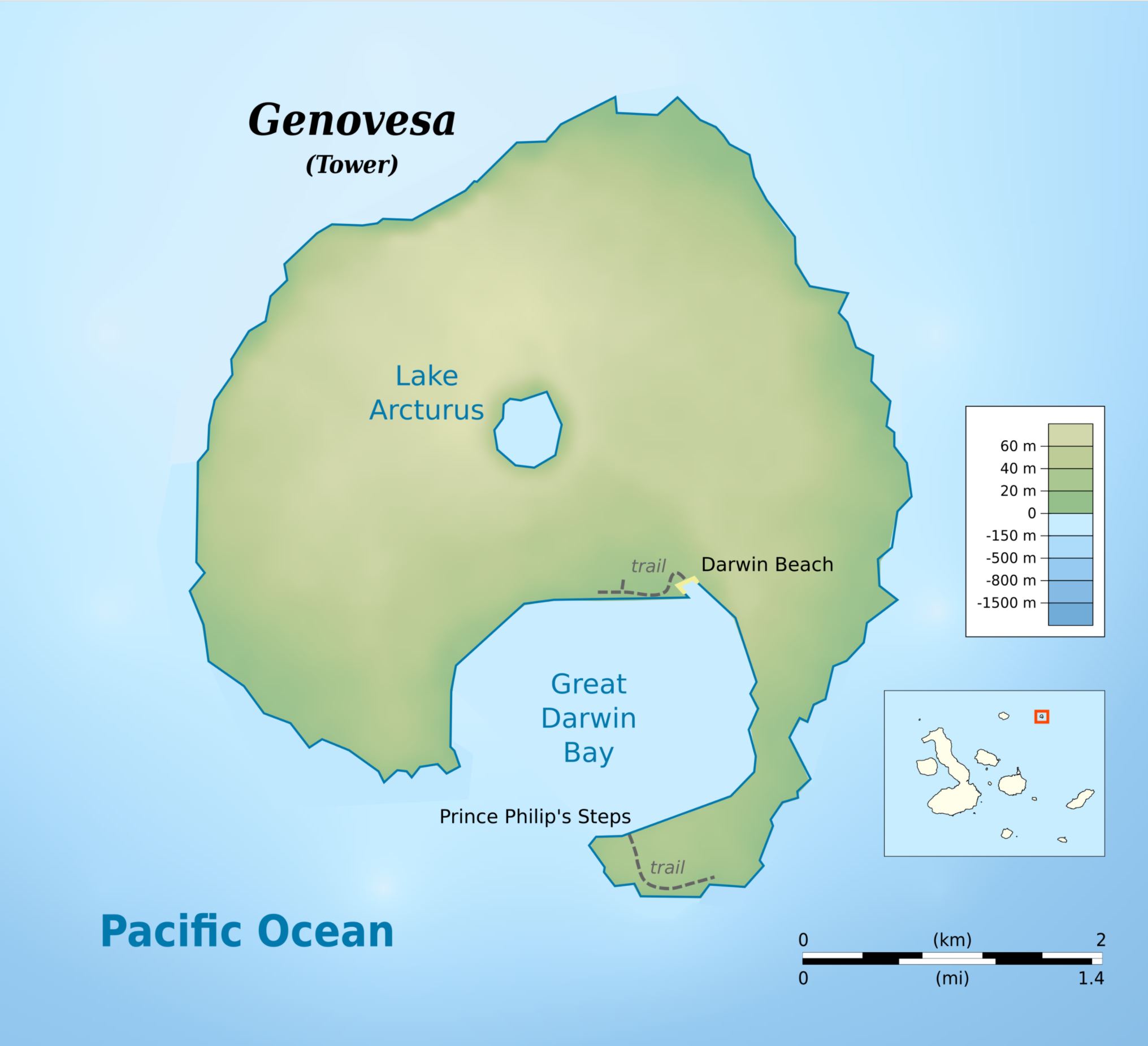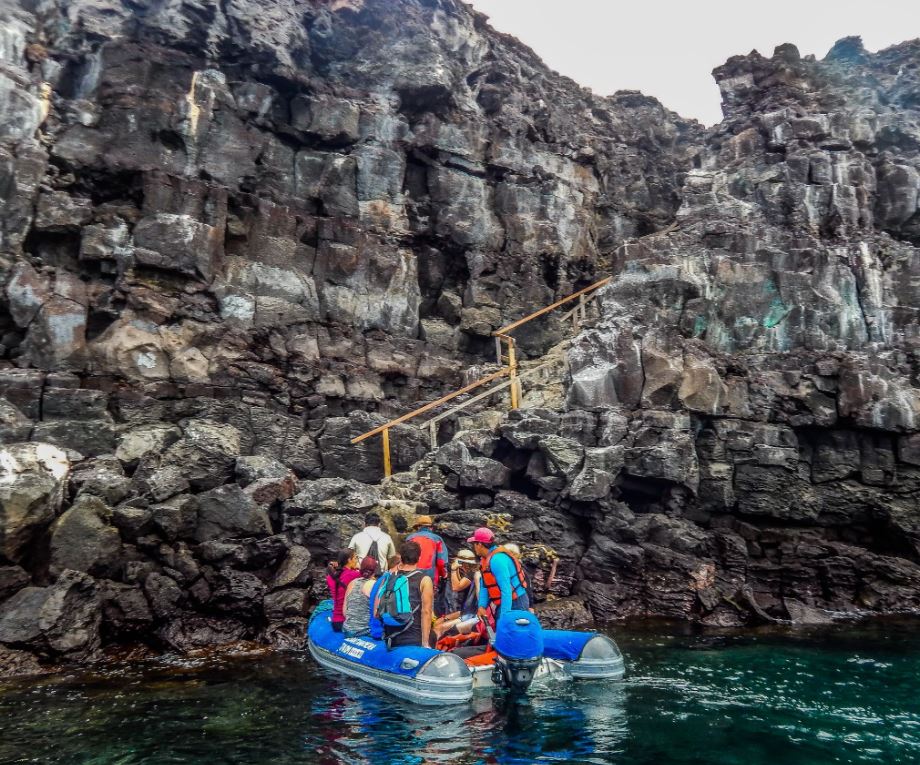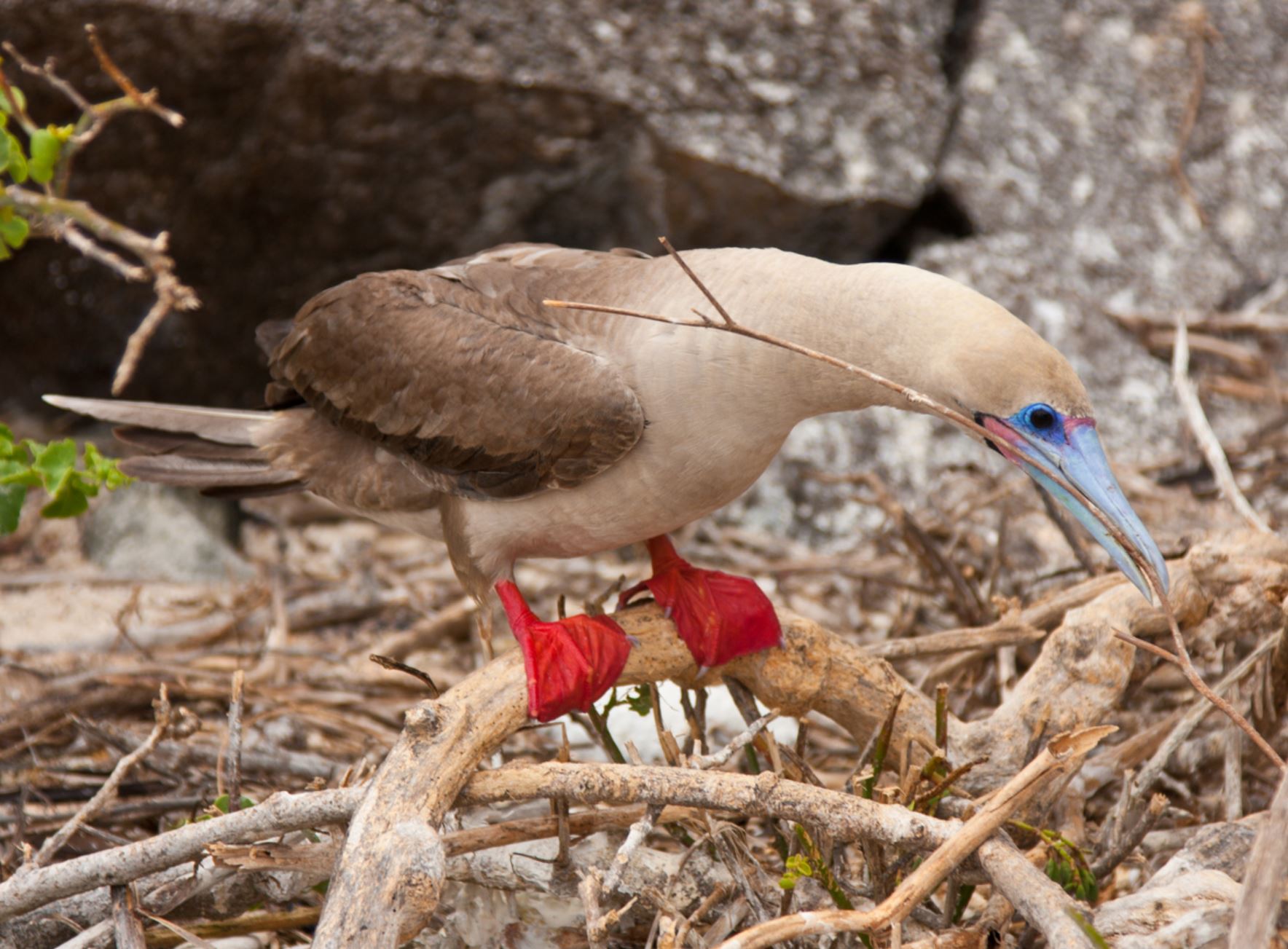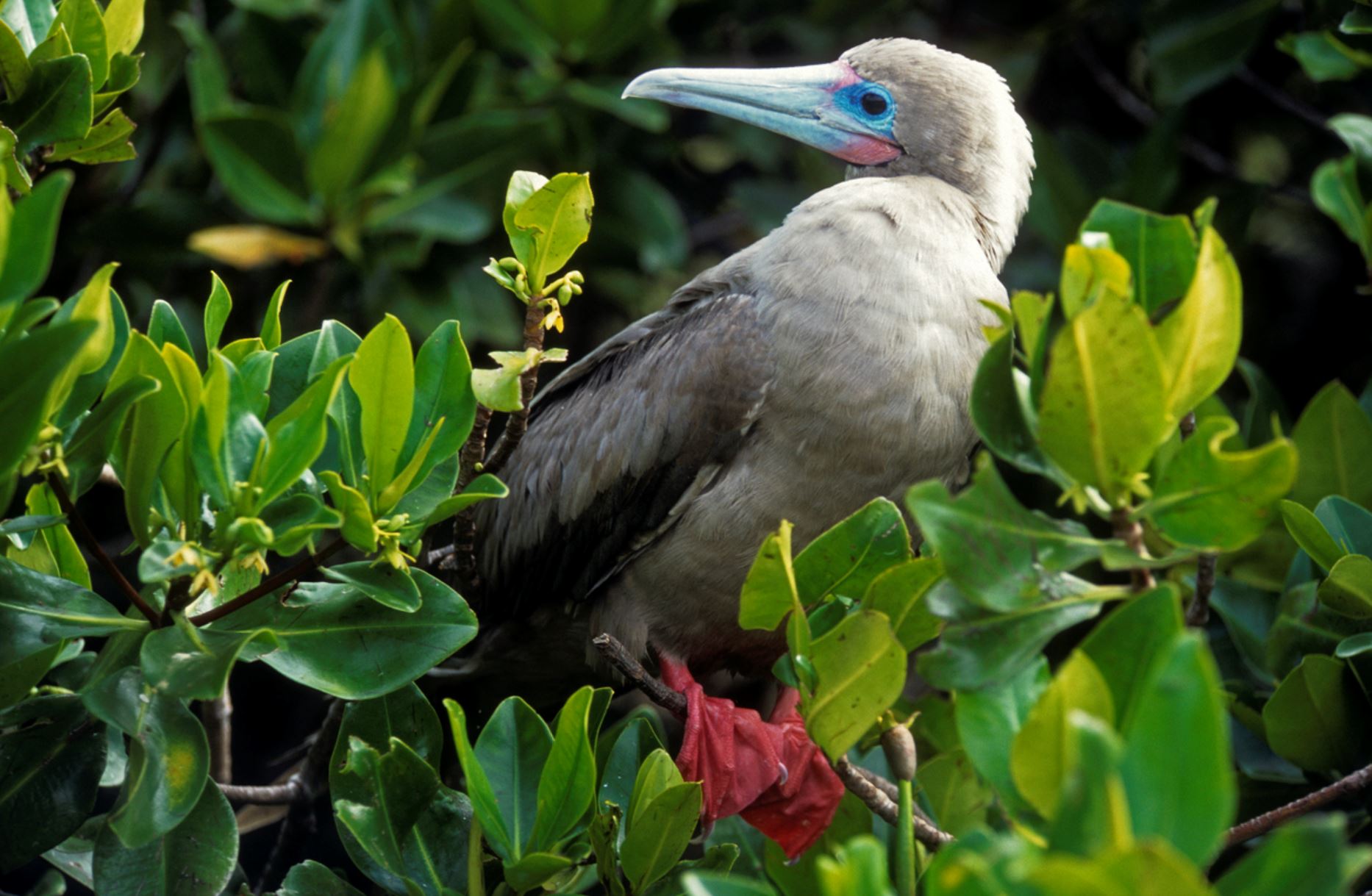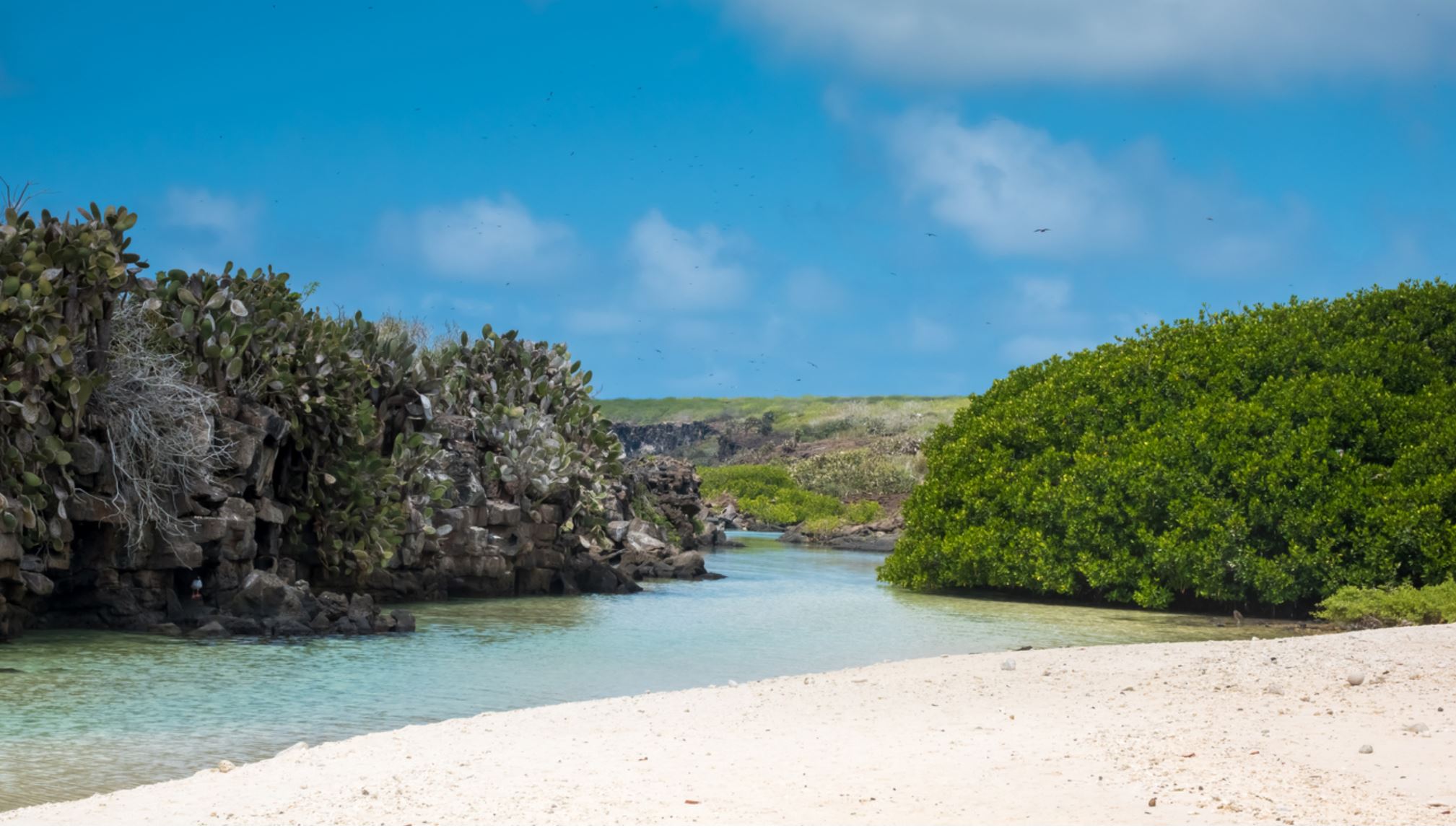Galapagos Wawed Albatros
This bird is endemic to the Galapagos Islands and is also known as the Galapagos Albatross, found in the largest colony in the world located on Española Island.
The preference for Española Island for a couple has its reasons. The eroded field of the islands has helped to create flat areas where the Galapagos albatross can easy takeoff with its large wingspan and weight near cliffs. They are known for their perfect flying abilities when using the wind speed to travel far distances. The flat fields are also the perfect location for nesting sites and the nearby cold water currents bring plenty of food.
The colonies are deserted from January to March. Males arrive first and wait for the females to meet them. Their courtship ritual consists of spectacular mating dance, based on bill circling and bowing, uprising the beak and clacking beaks together. As a monogamous animal, the dance in the next breeding season will be less elaborated. Females lay one big egg between April and June which is incubated for two months and is also moved to improve the hatching success. When an egg is abandoned, it can be adopted by another couple of albatross and rarely by another bird species.
When parents go fishing, the chicks congregate together probably to reduce the chance of being preyed upon. Once the parents are back, they recognize unique tones from each other. Chicks are feed about 2kg of an oily nutritious substance made out of digested fish and squid that is rich in nutritional value, thus the youngsters can be ready to leave the nest in about 6 months’ time.
They are considered critically endangered due to their delicate and fragile sole nesting area. There are 35 thousand pairs on the islands that can live up to 50 years.
Animal Group: Seabirds
Scientific Name: Phoebastria irrorata
Animal Average Size: 89 cm
Animal Average Weight: 2 kg
Places where you may see this animal in Galapagos: Genovesa, Santa Cruz, San Cristobal, Española
Pictures
Islands where you can see the animal with a little luck:
Santa Cruz
It is located on the center of the archipelago, the reason why it is the biggest human settlement, with a population of about 19 thousand people. This island is the most developed in terms of human population that started when one man was abandoned and survived in an old scientific settlement as the Course of the Tortoise tells. The highlands of Santa Cruz are one of the biggest green areas of the archipelago; therefore agricultural activities started on the early 40s and grew rapidly from there. The Charles Darwin Research Station was developed in town on 1959 and has allowed scientific research and conservation projects progress. In between the facilities there is the tortoise breeding center which objective is to rebuild an almost extinct population in Española island where only six individuals where remaining. Today, these efforts have restored the population to over one thousand individuals. Also named Indefatigable after the military British vessel,
The largest accessible lava tunnels. Underneath the ground hundreds of lava tunnels have been formed by different temperature kinds of lava flow. Some of these tubes are several kilometers long and even though most have collapsed with time and erosion, a couple of them are still there to be visited. They offer the visitor the chance to understand why the stories of pirates and treasures are related to these geological formations.
The biggest tortoises in accessible visitor site. The highlands of Santa Cruz have a big wild population of Tortoises, they walk freely around the private and National Park lands. In our visit to this area, one can notice the difference in size from these animals to others in other visiting sites. There are 15 subspecies of land tortoises in the Galapagos, 4 from which are extinct. They present two different tortoise shell shapes, the Saddleback and the Dome shape. Santa Cruz has tree tortoise subspecies that show both kinds of shells and allow visitors to notice the difference and once understand the evolutionary process that shaped them into this giant prehistoric like animals.
This island has six vegetation zones, each one very different to the others. The contrast of the arid or littoral zone located on the base of the island just a few meters from the ocean, and the scalesia and miconia zones, only to be found in San Cristobal and in this island at about 700 meters above sea level, is portrayed by the landscape and the ecosystems. One of the rarest bush forests stands in the center of the island, spread on top of the Twin Craters.
This island also has some of the largest mangrove areas, a very important ecosystem for all marine life and many terrestrial species. These zones are the nursery of most marine fish and shark.
Tortoises, lava tunnels, white-sand beaches and a picturesque modern town Puerto Ayora bring lift to one of Galapagos greenest, most tropical islands.
Visitor sites: Bachas Beach, Ballena Bay, Black turtle Cove, Carrion Point, Carrion Point Dive site, Charles Darwom Station, Dragon Hill, Eden Islet, El Chato Giant Tortoise Reserve, Hacienda Primicias Reserve, Village Puerto Ayora, Santa Cruz highlands, Tortuga Bay, Twin craters
San Cristóbal
One of the oldest and closest to the continent, located on the east of the archipelago, which means it is the farthest of the hot spot of all, about 200 kilometers away from it with no volcanic activity. It is formed by four volcanoes bonded together and is the most humid island due to underground aquifers and fresh water flows. The English named it Chatam because of the British Prime Minister William Pitt of Chatam. It holds the biggest fresh water lake of the archipelago called El Junco, located on the south center part of the island about 660m above sea level. San Cristobal is one of the two only places where the Red Footed Booby can be found in a nesting colony in Punta Pitt visiting site.
This island is the capital of the archipelago, Puerto Baquerizo Moreno, with a population of about 7 thousand people. Human development started on the early 1832, firstly on the highlands on a sugar production settlement. An Interpretation Center was developed in town, where visitors can learn about the biological and historic facts that conform the islands.
Charles Darwin Journey on San Cristobal. This is the first Island visited by Charles Darwin, and his first impression of the dry coast he saw was of a deserted and isolated place. He did not find the tropical richness he expected, but he had the chance to collect the first specie that later on would be the start of his Theory of Evolution, the San Cristobal Mockingbird.
Punta Pitt visitor site is one of the two only places where the Red Footed Booby can be found in a nesting colony and offers an amazing red landscape full of Sesuvium, a very special endemic plant specie that turns color depending on the season. It has a magnificent beach formed with Peridot, a sparkly mineral creation that shines green with sunlight.
Cerro Brujo visitor site is the only place in the archipelago where Red Footed Boobies, Nasca Boobies and Blue Footed Boobies are found nesting together.
Tijeretas visitor site is the very first point that Charles Darwin visited on his journey. Not far from the interpretation center, there is a calm water rocky bay, a magnificent snorkel area and view site for nesting Frigate Birds, animal from which the place takes its name, Tijeretas.
Cerro Colorado visitor site on the southwest side of the island holds the facility of the Tortoise breeding Center, an semi natural area built for the purpose of rebuilding the tortoise population of the island and their conservation.
Visitor sites
El Junco Lagoon, Kicker Rock, La Galapaguera Jacinto Gordillo Breeding Center, Interpretation Center Gianny Arismendi , Tijeretas Hill, Lobo island, Pitt Point, Puerto Baquerizo Moreno, Puerto Chino, Witch Hill
Española
English named for the Española Island it Hood Island after Viscount Samuel Hood. It is located in the extreme southeast of the archipelago and is considered, along with Santa Fé, one of the oldest Galapagos islands, at approximately four million years. A popular tourist stop, Isla Española is the most southerly island in the Galápagos Archipelago. The climate is very dry, like most of the Archipelago. But due to the flatness of the island, it is the driest of these islands, with only a few inches of rain per year. It is about a 10- to 12-hour trip by boat from Isla Santa Cruz.
Tourists come to see the waved albatrosses (from March to January, almost the entire world population breeds on the island) and the mating dances of blue-footed boobies. Two spots are especially popular with visitors: Bahía Gardner, which has a lovely beach; and Punta Suárez, of interest because of its varied bird-life. This island has its own species of animals, such as the Hood mockingbird, which has a longer and more curved beak than the one on the central islands; the Española lava lizard and the marine iguana of the subspecies venustissimus, which has red markings on its back. There are also swallow-tailed gulls, Galapagos hawks and other birds. The island has been recognised as an Important Bird Area (IBA) by BirdLife International.
While Española Island is one of the oldest of the Galápagos Islands, this island is dying, slowly becoming a rocky, barren land with little or no vegetation. But this does give large bays, with sand and soft shingle which attracts a healthy number of Galapagos sea lions. In January 2020, it was widely reported that a male Galapagos tortoise named Diego fathered and resurrected the island tortoise population, saving the diminishing species from near extinction.
Visitor sites:
Gardner Bay, Suarez Point, Osborn islet
Genovesa
Genovesa Island (Spanish: Isla Genovesa), named after the Italian city of Genoa, in honor of Christopher Columbus, (referred to in English as Tower Island) is a shield volcano in the Galapagos Islands in the eastern Pacific Ocean. The island occupies about 14 square kilometres (5 sq mi), and its maximum elevation is 64 m (210 ft). The horse-shoe shaped island has a volcanic caldera whose wall has collapsed, forming the Great Darwin Bay, surrounded by cliffs. Lake Arcturus, filled with salt water, lies in the centre, and sediment within this crater lake is less than 6,000 years old. Although no historical eruptions are known from Genovesa, there are very young lava flows on the flanks of the volcano. Genovesa is one of the most precious islands to visit in a Galapagos cruise! Genovesa is also known as the “Bird Island“, and it most certainly lives up to certain standard in a spectacular way. Passenger will have the opportunity to enjoy the most representative birds of Galapagos as: Puffball–chicks, white both yellow–crowned and lava herons, Red footed boobies contrasting with the Nazca booby and also the Sawllow–tailed gulls, the only nocturnal gulls in the world that will be nesting at the cliff’s edge.
Visitors sites: Darwin Bay, Prince Philp´s Steps
Mr. Frobeen can give you precise information about the ships.
Mr. Frobeen will be happy to advise you by phone at +49 (0)7633 9399360 or via email info@frobeen.de
If you want to book, what are the payment methods?
The reservation is gratis as an option.
If you want to make an fixed booking, there is to pay a deposit of 20%.
The remaining payment is due 4 weeks before departure. In individual cases, such as diving cruises, other rules apply. Information on request.
- Your payments are insured against bankruptcy!

